Kei Tua o te Pae
Kei Tua o te Pae/Assessment for Learning: Early Childhood Exemplars is a best-practice guide that will help teachers continue to improve the quality of their teaching.
The exemplars are a series of books that will help teachers to understand and strengthen children's learning. It also shows how children, parents and whānau can contribute to this assessment and ongoing learning.
We are making improvements to our download-to-print functionality. So if you want a printed copy there are PDF versions available at the bottom of the main cover page.
Exemplars – Ngā tauaromahi
-
Emily's song
-
Child: Emily
Teacher: Jane
A learning story
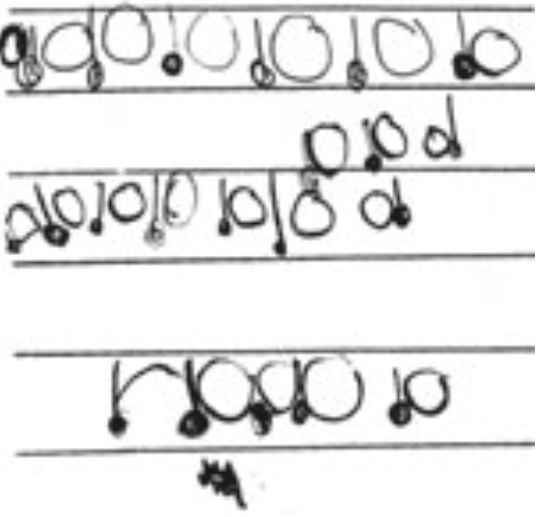
Emily came up to every one of us this morning proudly holding something she had written. I said, “What is it, Emily?” She answered, “It is a song.” I could clearly see the musical notes she had written. A little later Rosie made a suggestion that maybe Emily would like to sing her song at mat-time. I wondered if she would be brave enough to stand in front of everyone and sing a song, especially one that she had just written, without practising it. Well, she did and it was fantastic. It was all about princesses with little bits of familiar kindergarten songs in the middle. We all clapped and cheered when she had finished. I asked her if she would like to tape it so that we could learn it and then sing it, but she said, “I have to take it home to teach it to my brother”!!Short-term review and What next?
I kept thinking about Emily and her song all weekend. It was amazing for her to write musical notes and make up a song and then to perform it. What confidence she has to do this. I am in the process of acquiring a tape recorder and then I will encourage her to record her song. Maybe she is going to be a songwriter when she grows up? This is a wonderful example of Emily’s literacy learning and her total involvement in something she loves to do.
-
-
Vanessa’s dog, Trent
-
This story began one day when Vanessa told me that her family were going to get a puppy. A conversation with her mum revealed that Vanessa was “breaking her neck” to get the puppy. She just loves animals.
The day came when the puppy arrived. Vanessa was bursting with the news when she came to kindergarten and with great delight told all the teachers. And so the beautiful pictures of Trent began with this one.
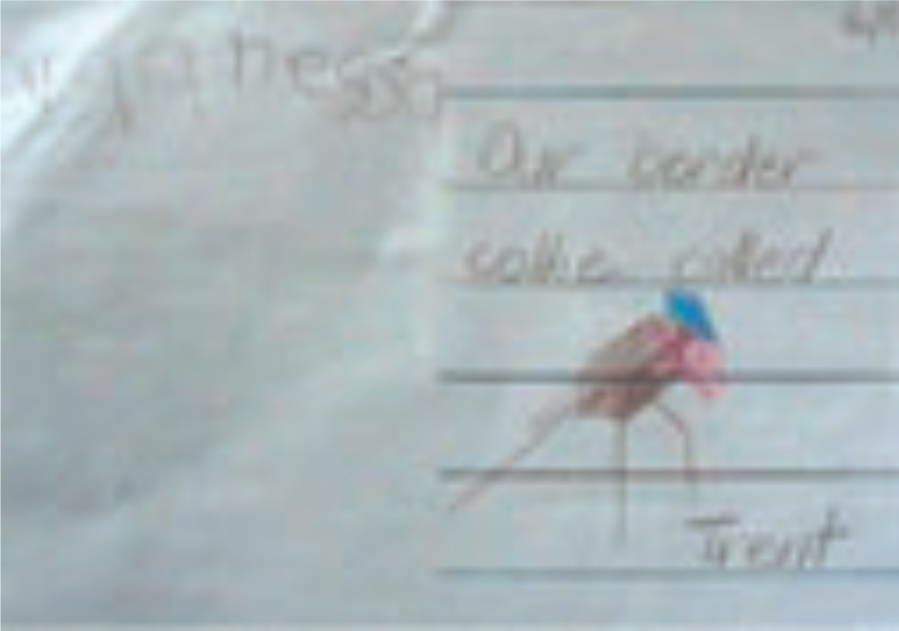
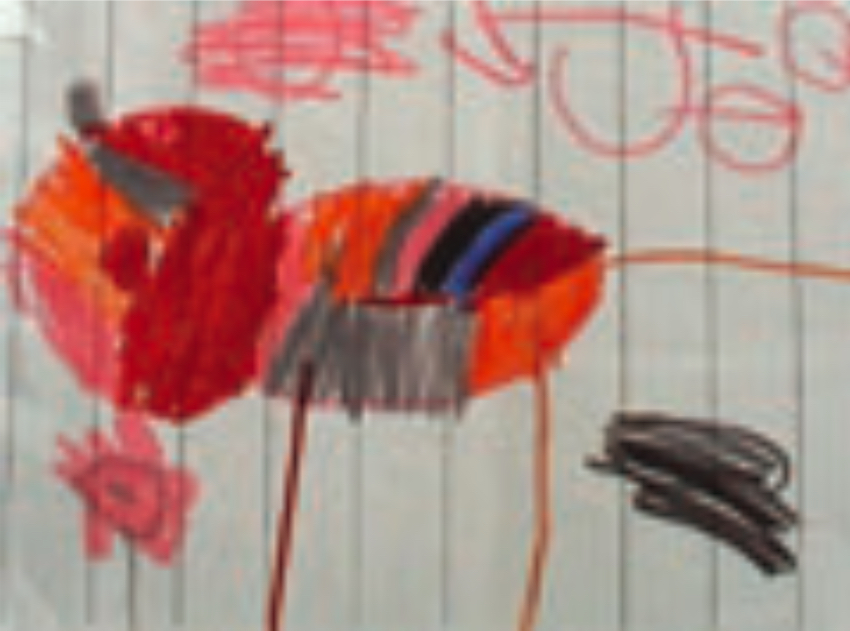
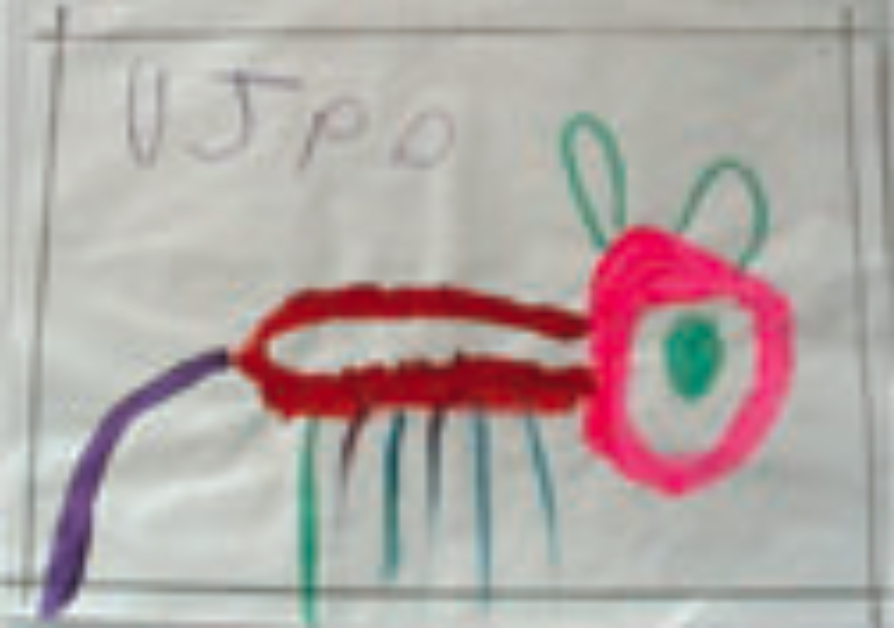
Day after day Vanessa drew or painted pictures of Trent. The pictures became more colourful.
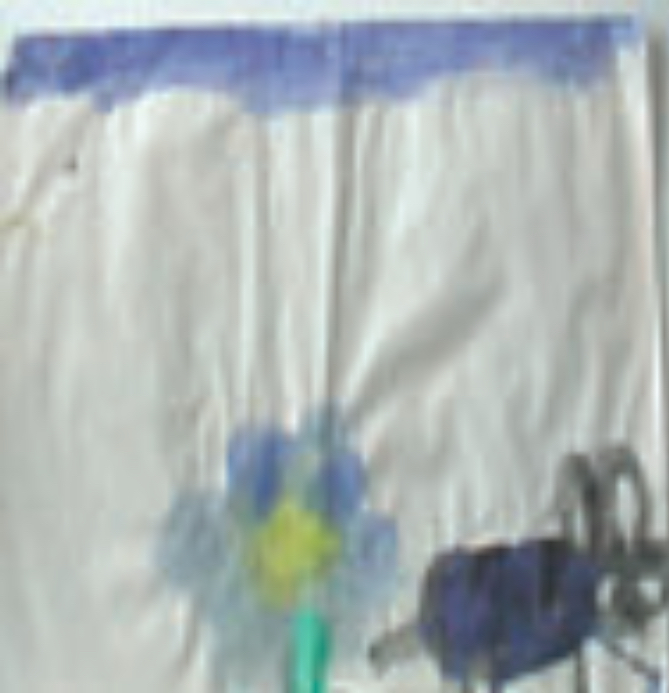


Vanessa began to add more of the environment and the flowers that she loves to paint into her pictures.
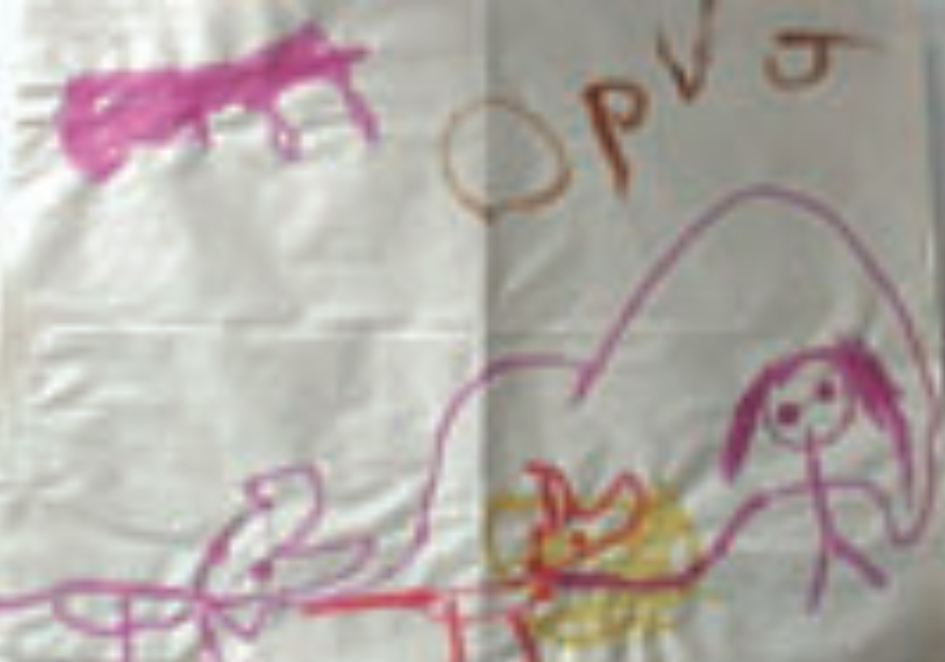
The more pictures Vanessa drew, the more complex the content became. Here she is skipping with Trent.
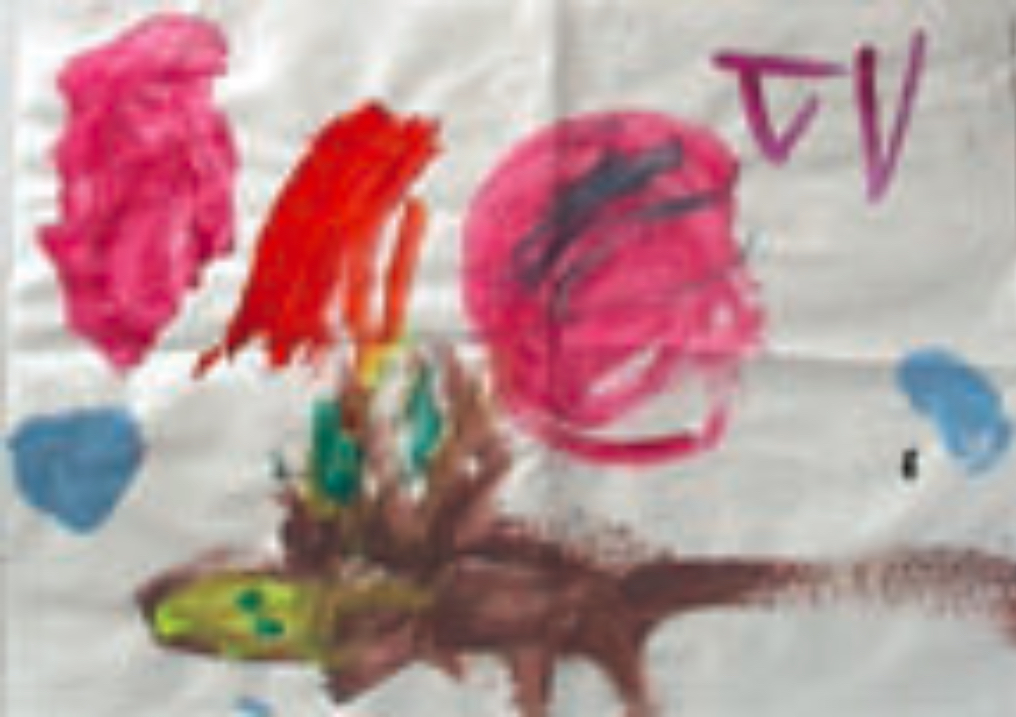
Vanessa explored and used a range of colours and media, the image of Trent still being central to her work.
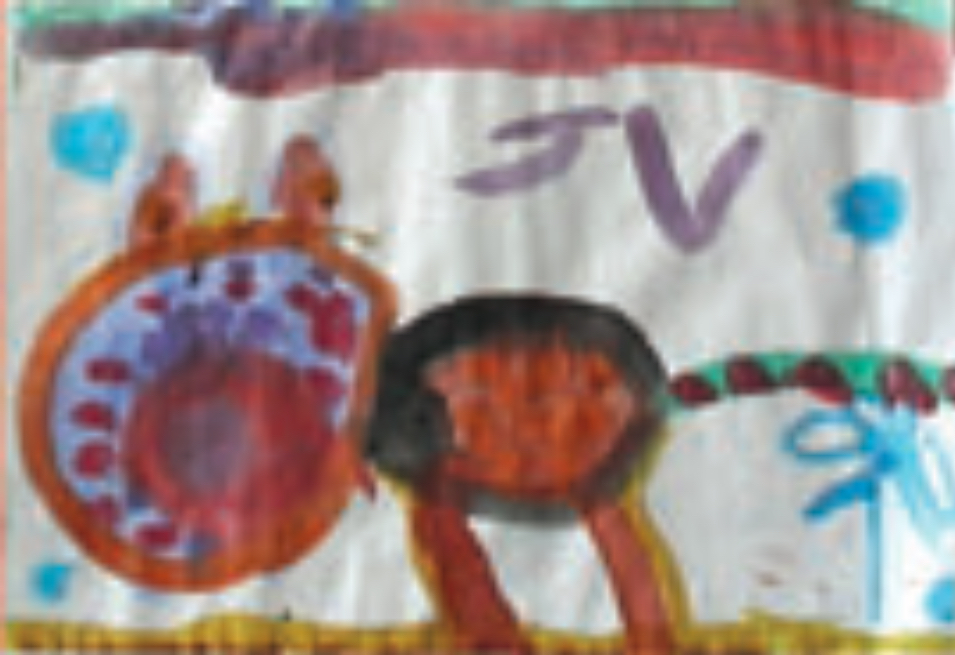

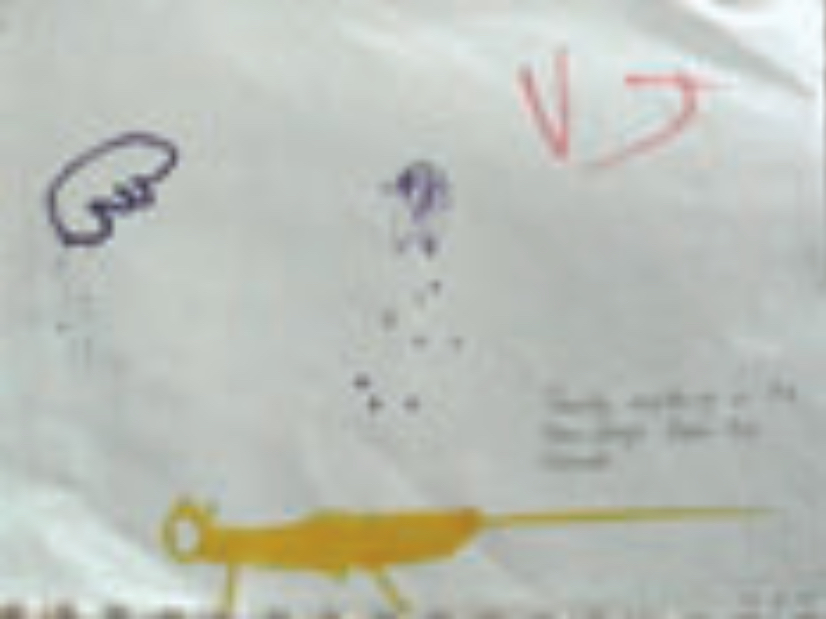
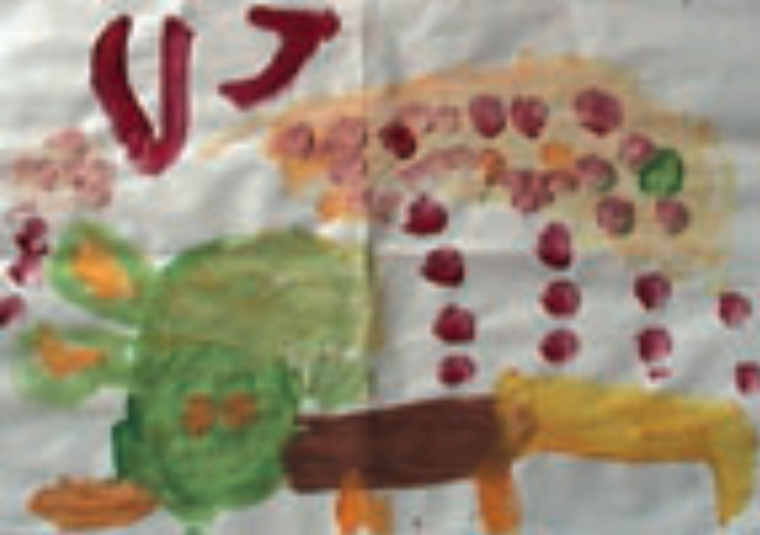
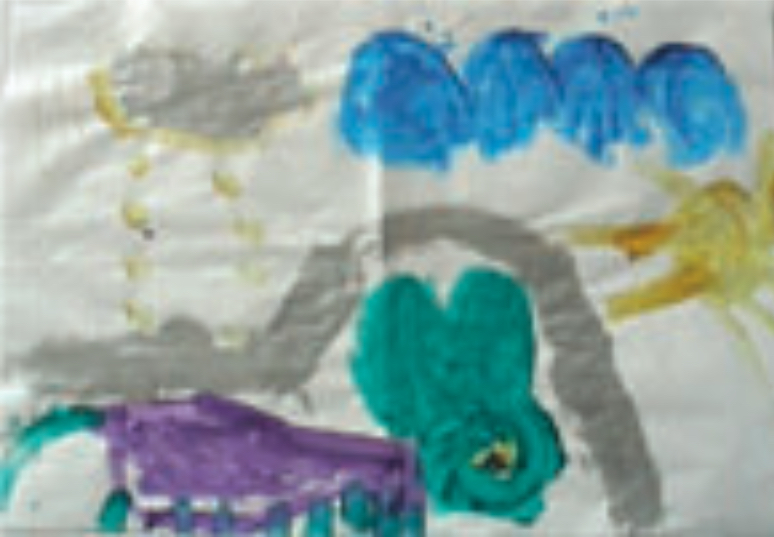
Vanessa brought real life situations into her paintings. Trent still had to be walked, even in the rain!
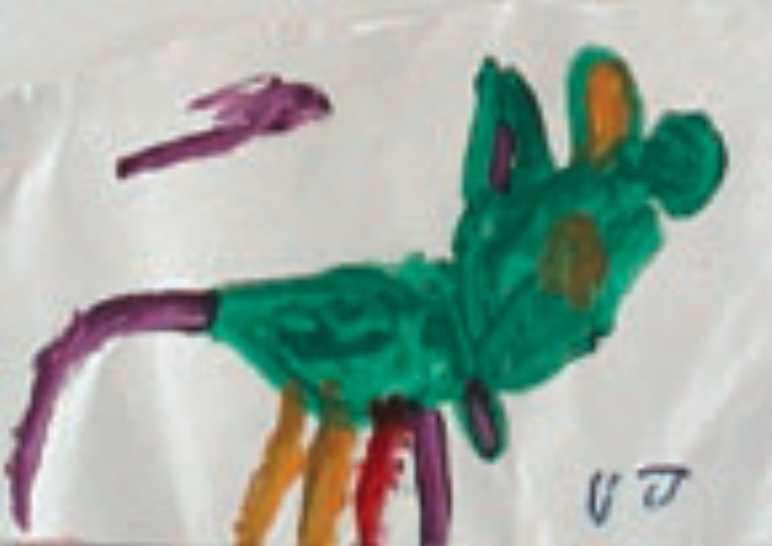
As the paintings progressed, so did Vanessa’s images of Trent. He began to get more features – ears, nose, tail, often a collar and lead, and always two bright eyes.
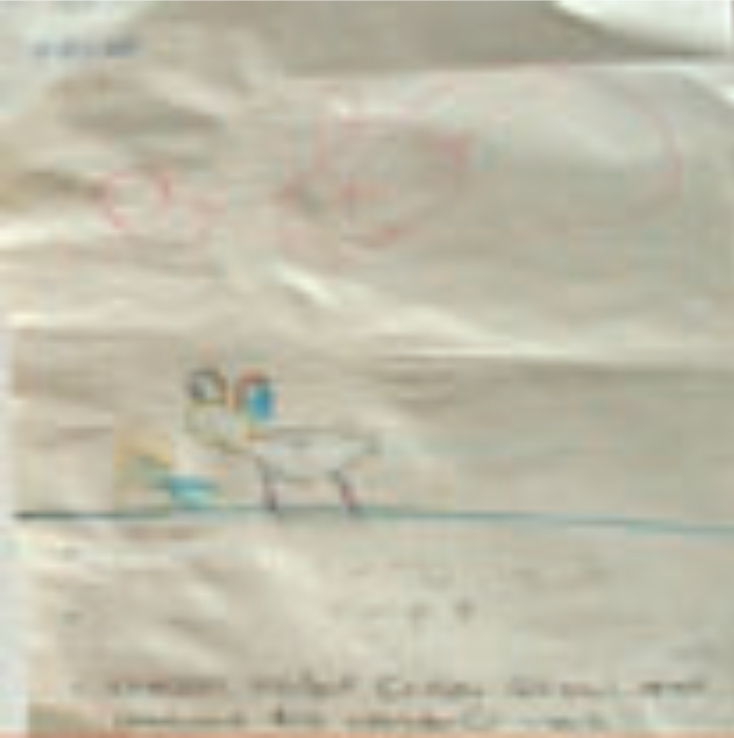
Vanessa went on a school visit. The children were asked to draw a picture and write a story. Vanessa chose Trent as her topic.
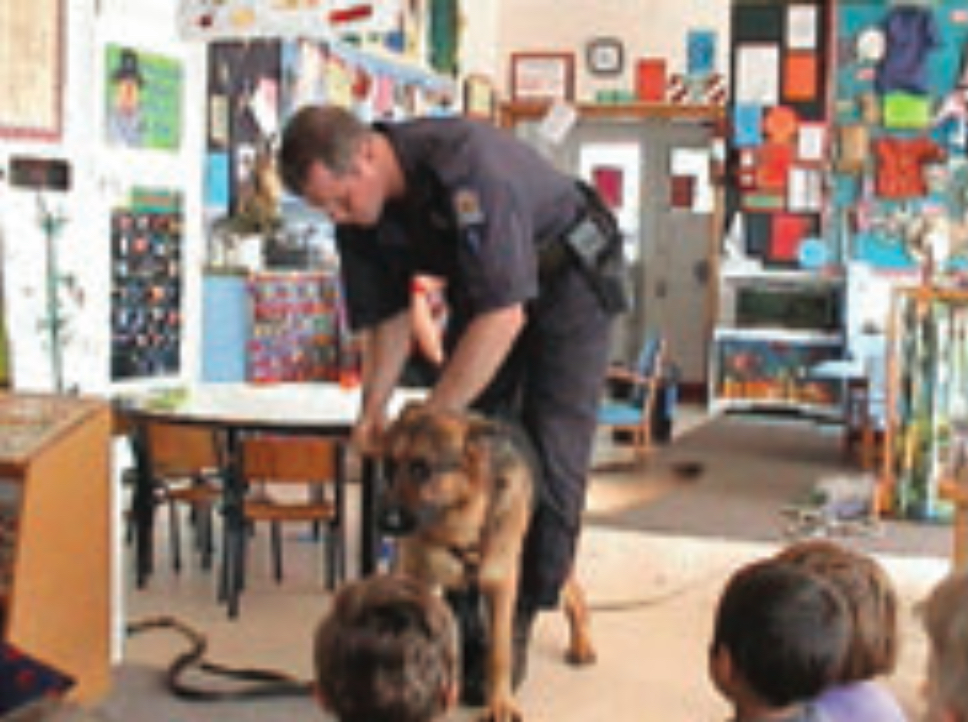
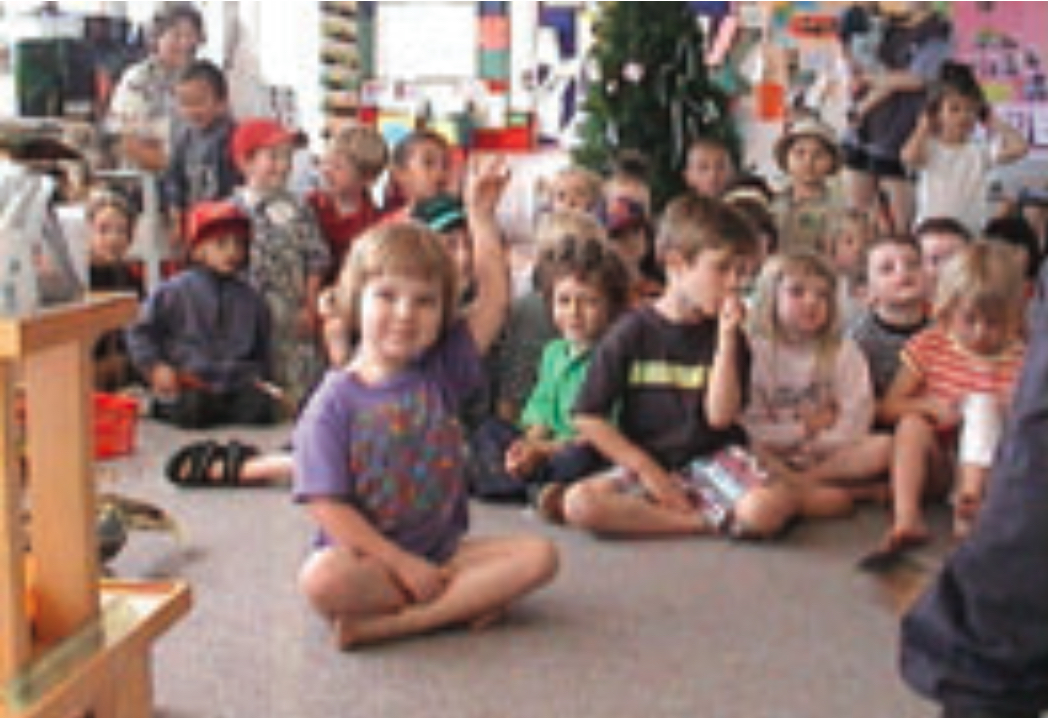
Over the months, we frequently heard about Trent – what kind of dog he was, what his parents’ names were. One day he visited kindergarten with Vanessa’s mum so that Vanessa could show him at news time and talk about him. He was a star!
Then the day came when we heard that he had gone to obedience class. Vanessa knew all about it. He had to go so he could learn to sit, come, and do as he was told.
With this news we thought it might be fun to show Vanessa what a well-trained dog can do, so we invited Constable Fraser from Glen Innes police station to bring his dog to the kindergarten. Vanessa sat transfixed, right up the front. Sadly, Constable Fraser and his dog, Sin, were called to an emergency and had to leave when we had only seen a few tricks.
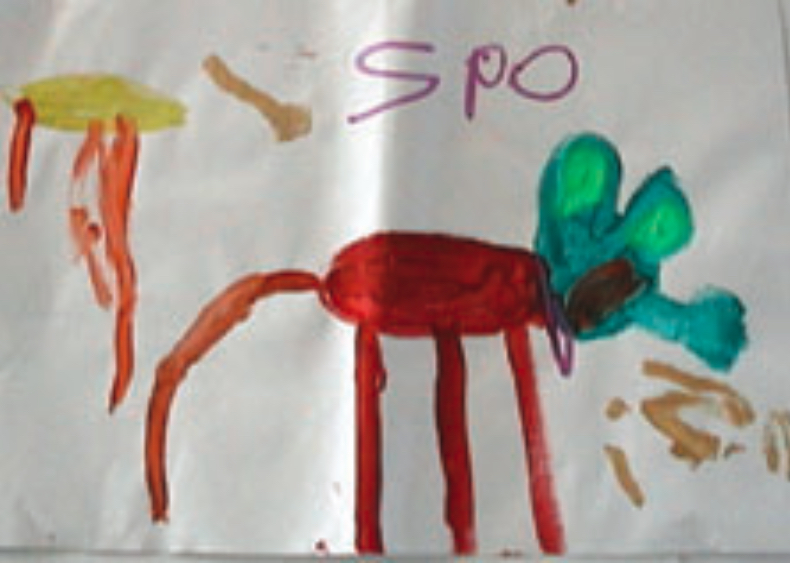
This didn’t dull Vanessa’s enthusiasm. She went straight to the painting easel and painted her image of Sin.
This is a wonderful image of Sin. He is indeed very tall. He has big ears and a long swishy tail.
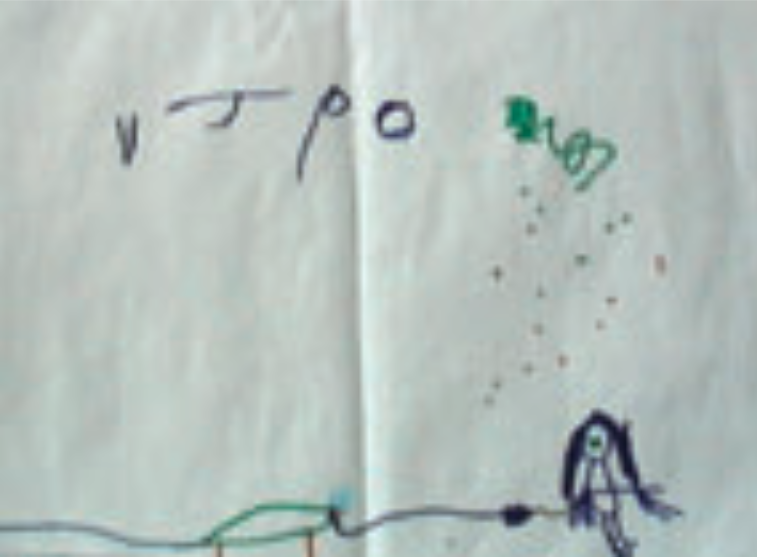
Vanessa takes Trent for a walk. She told us that he has his own special lead and collar.

Such was Vanessa’s enthusiasm, her friend Zoe began painting pictures of Trent for her.
Now these two friends engaged in “doggie” play. For some time each day, one or other of them would be the dog. A lead would be tied to either their waist or around their wrist and the “dog” would crawl around on all fours, frequently yapping like a puppy!!

Vanessa and her family went on a holiday to Canada for five weeks. Trent had to go to friends. On her first day back at kindergarten, a picture of Trent was high on Vanessa’s priority list. Trent is so loved by Vanessa.
What learning was happening for Vanessa?
Through this series of paintings and pictures, Vanessa has shown that she can maintain interest and be involved for a sustained period of time. At present Trent is the centre of her life. She has a great understanding about caring for her pet and about his background. She spoke knowledgeably about his parents and pedigree. Her communication skills have been extended by her speaking in front of the children and to individuals about her dog. As Vanessa developed, so did her observations of Trent and her representations of him. I loved the way his features – ears, nose, and tail – developed.
The police dog representation is very interesting as it shows that Vanessa is developing an awareness of mathematical concepts. The dog is indeed very tall and has a very long nose and tail. These are represented in proportion in Vanessa’s painting.
I have never witnessed passion about a pet from someone so young. I think Vanessa has a great love of all animals. Her first year at kindergarten was dominated by play around our toy wild animal collection.
-
-
Greta responds to music
Child: Greta (20 months)
Teacher: Caroline
A learning story
The tape of dancing music was turned on and Greta began to wiggle her hips to the beat. Caroline: “Dancing, Greta.”
She turned and smiled.
Caroline: “Jiggling to the beat.”
Moving her feet and tapping, Greta continued to dance. The music stopped so Greta stopped.
We changed the tape to a “sounds” tape. Greta stood listening intently for a moment and then jumped up and down, clapping her hands. The sound changed to a heavy beat and Greta walked slowly, bending her knees in time to the music. The sound changed again and she paused. Caroline asked, “What is that sound, Greta?”
Greta just pursed her lips, smiled, waved her arms, then ran off outside!
Short-term review
Ruth, given the confidence and competence of Greta’s musical performance, you’ll already be aware of her talent! What are we going to do about it? Does she like a wide range of music because she is certainly identifying rhythm and beat and reacting to changes with dramatic style!
What next?
We’ll continue to explore sounds in play and to offer musical activities in a variety of settings with Greta by herself and in groups. Introducing a wide range of descriptive language to reinforce the musical concepts may also be useful. And we won’t forget to encourage the fun.
-
Rangitoto
-
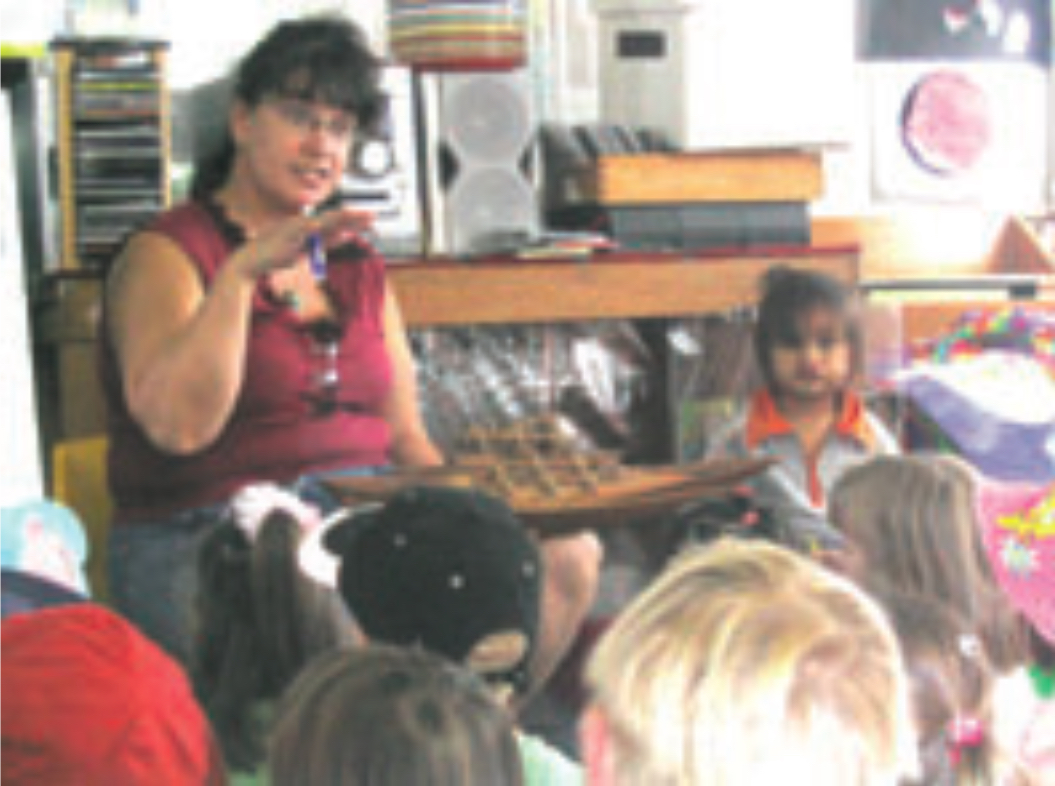
Today Kauri’s mum told us the story of how Rangitoto got its name.
Back in the days of early migration when the great ancestral waka came to settle in Aotearoa, many of the landmarks that were discovered were named not only according to appearance but about incidents that occurred there. Such is the case of Rangitoto. The Te Arawa waka captained by Tamatekapua arrived on the volcano.
It was closely followed by the Tainui waka. Horouta was the captain. He had been in pursuit of the Te Arawa waka for some time. It is told that Tamatekapua had stolen Horouta’s wife, which enraged him enough to follow Te Arawa all the way across the Pacific to Aotearoa. It was on Rangitoto that he caught up with
Tamatekapua and a fight broke out in which Horouta made Tamatekapua’s nose bleed. It is for this reason that the volcano was named Ngā Rangi-Toto-a-Ihu-a-Tama- Te-Kapua. This means “the day of the bleeding (nose) of Tamatekapua”. The two humps we can see either side of the tall one are known by some Māori as lizards guarding Rangitoto.
Story as told by Janine Dewes
What does Rangitoto look like?
“Children develop knowledge about the features of the area of physical and/or spiritual significance to the local community, such as the local river or mountain.” Te Whāriki, Belonging – Goal 1

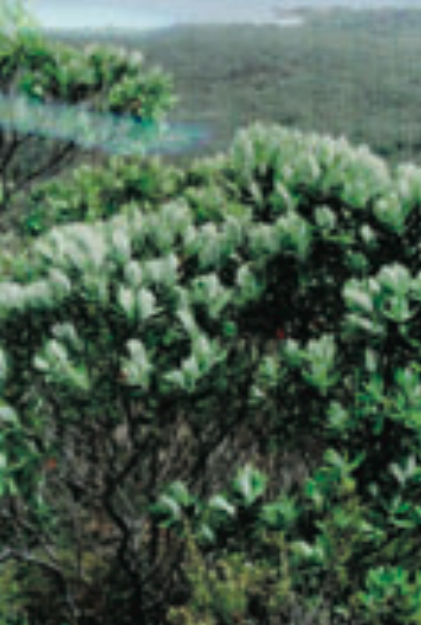
Painting Rangitoto
April
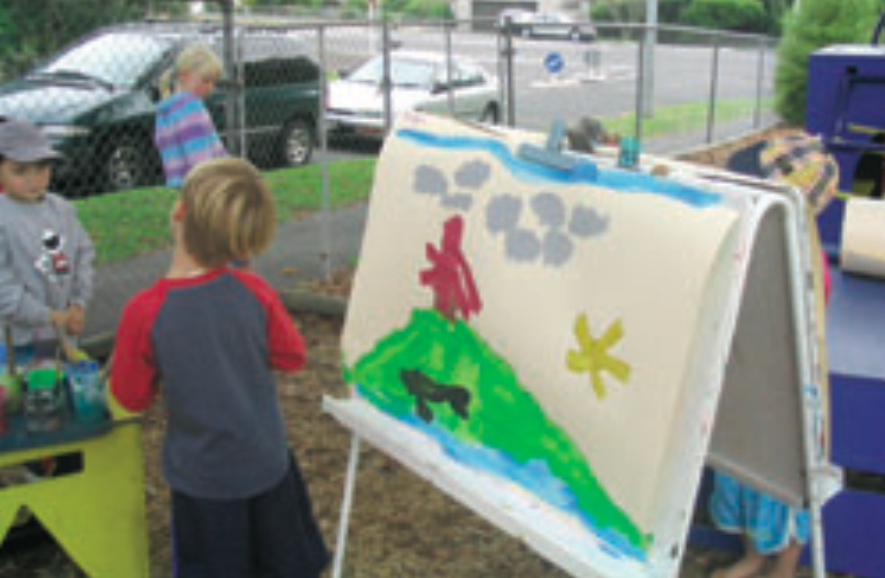
Today William and his friends painted Rangitoto from our view from the playground. William’s painting closely resembled what he could see. He even asked me for some light grey paint for the clouds, which were definitely light grey. He looked up frequently to have a look at Rangitoto. William showed real perseverance because he was painting this for about half an hour until he was completely happy with it.
Our mosaic sign – A learning story
The Orakei Kindergarten sign has evolved from the children’s ongoing interest in mosaics. To further extend their learning we set out to find a long-term project that would be meaningful to the children.
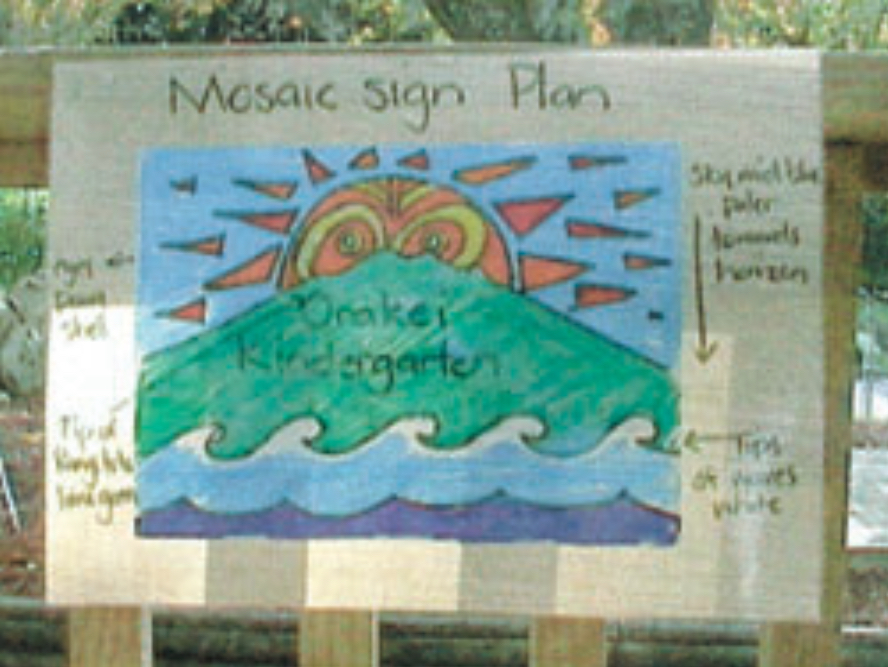
The plan helps the children to imagine what the finished sign will look like.
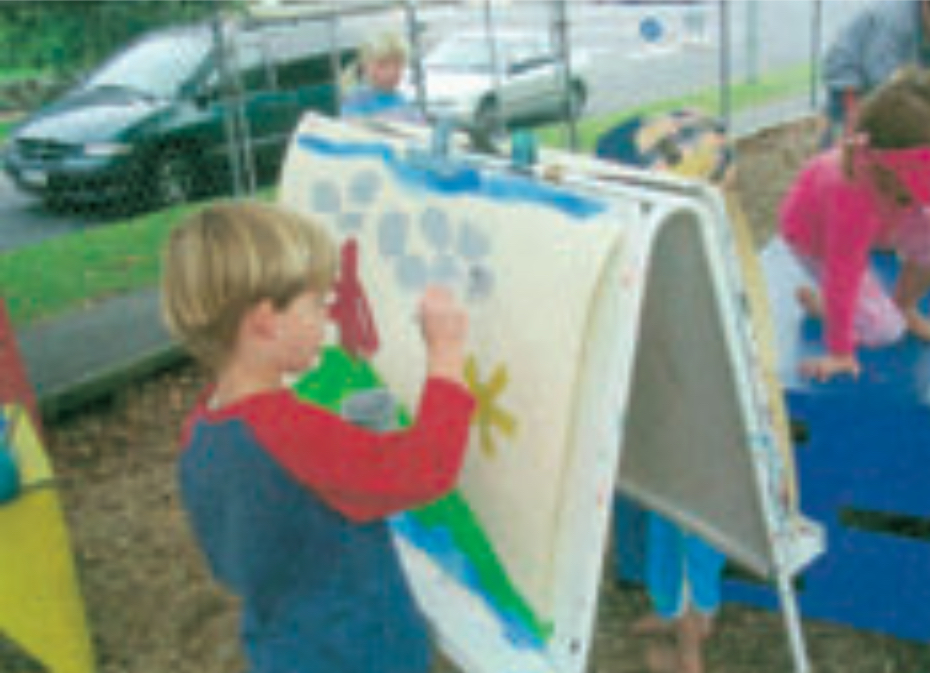
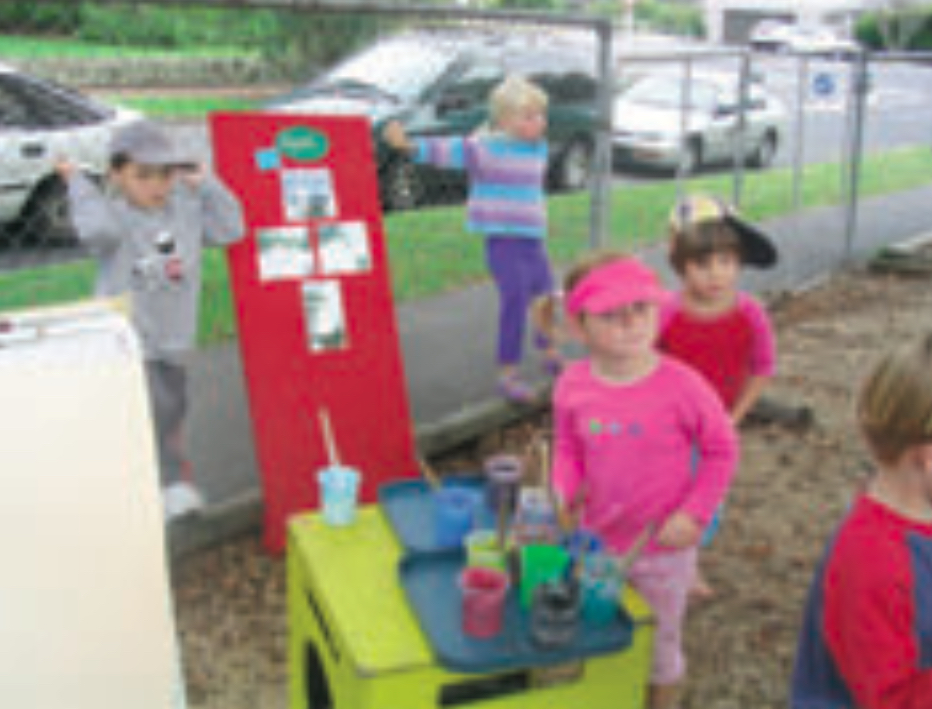
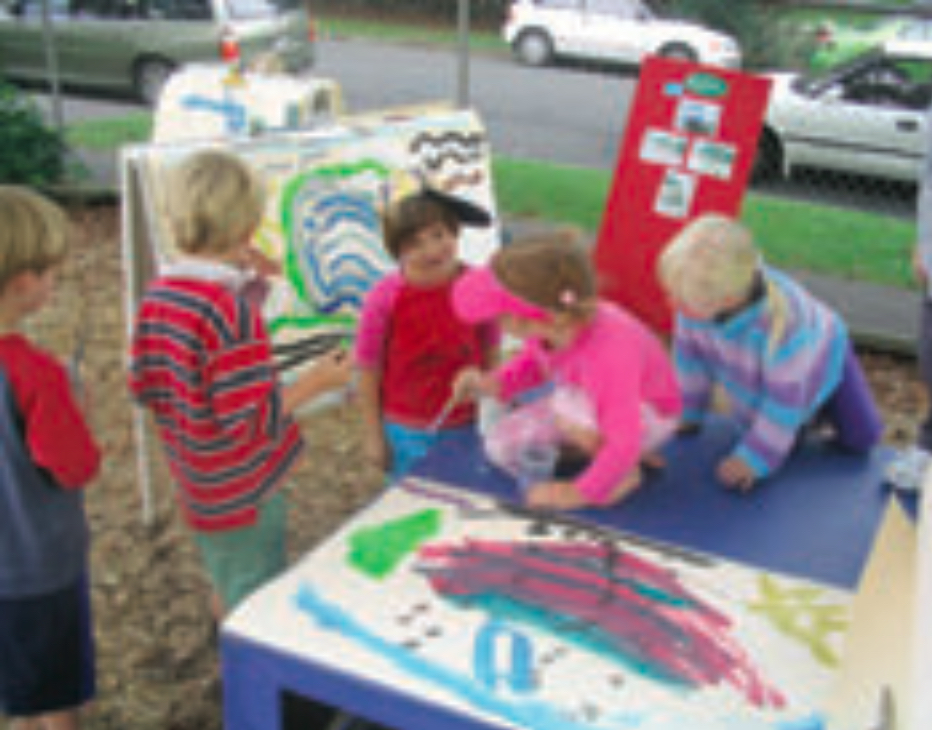
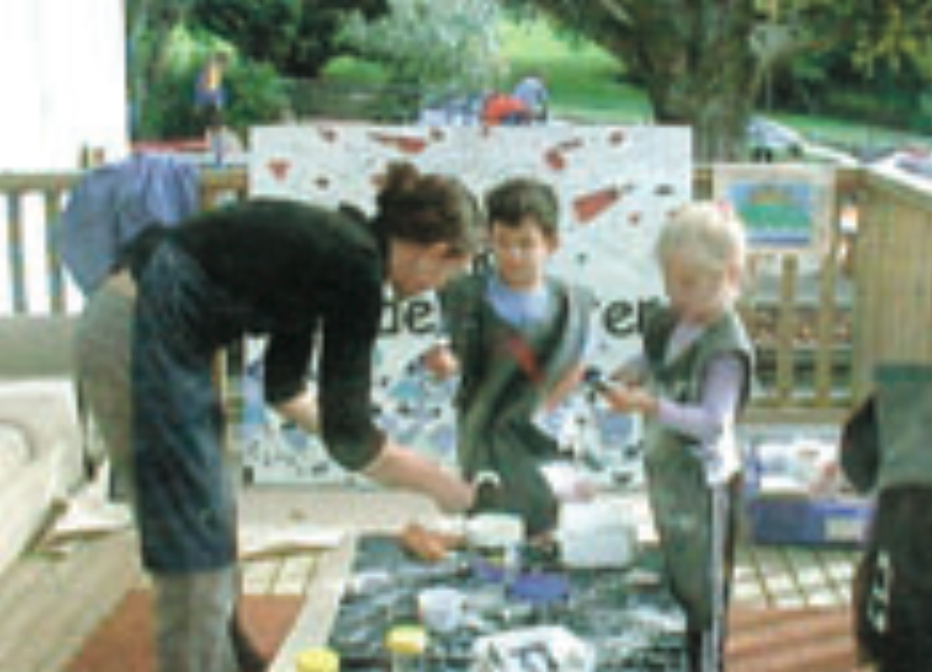
Manaaki and Katie glue on the pieces they have just cut to size.

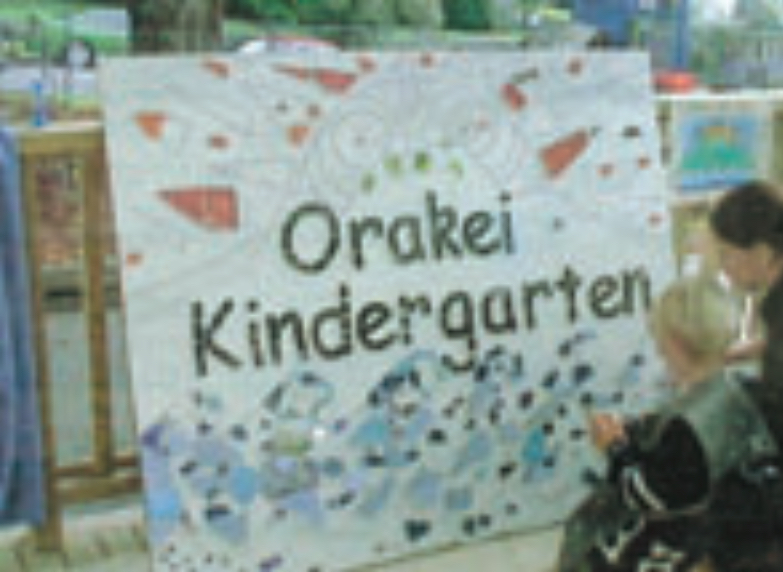

Jacqueline, Kate, Gabriella, Eden and Rebecca cut out and stick on the large pieces. Jacqueline, Kate, Gabriella, Eden and Rebecca cut out and stick on the large pieces. William S. thought the dark blue tiles should go down the bottom where the sea is deeper. 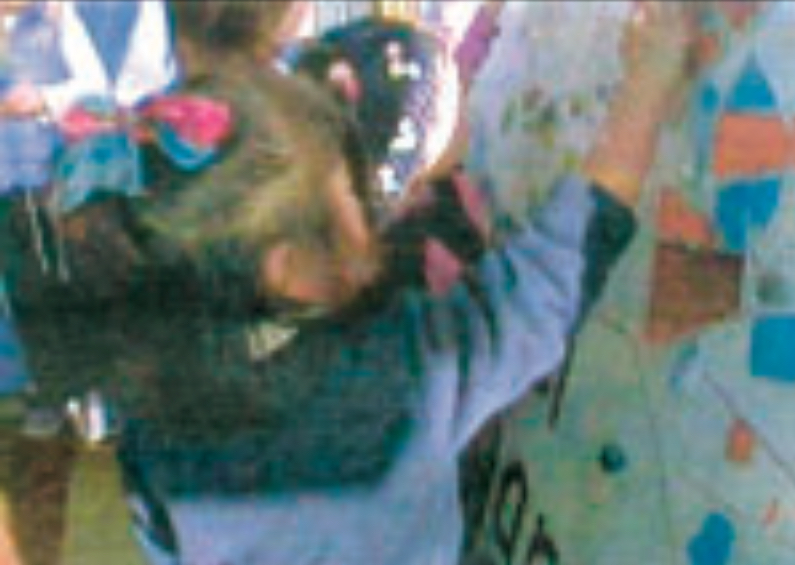
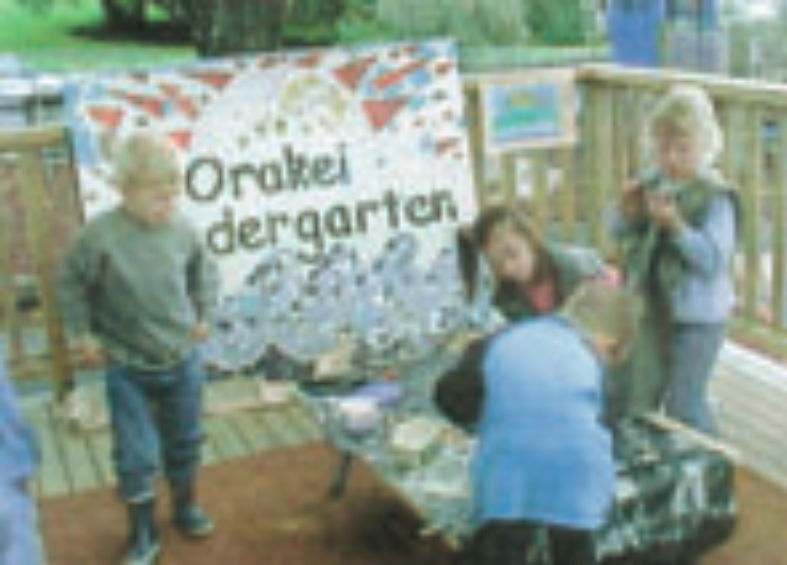
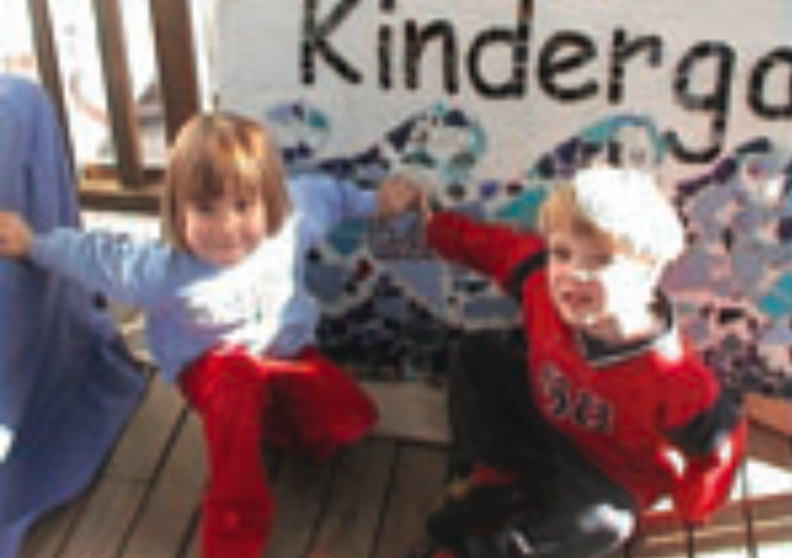
Archer, Claire, Tracy and Kate wipe the excess glue off the next day and make the tiles “really shiny”. They are careful but sometimes a piece of tile falls off. George, Claire, Hamish and Rebecca look for curved pieces of yellow tile for the sun’s eyes and match the curved shapes to the lines of the board. Meg and William brought a paua shell from home to glue in the sea. 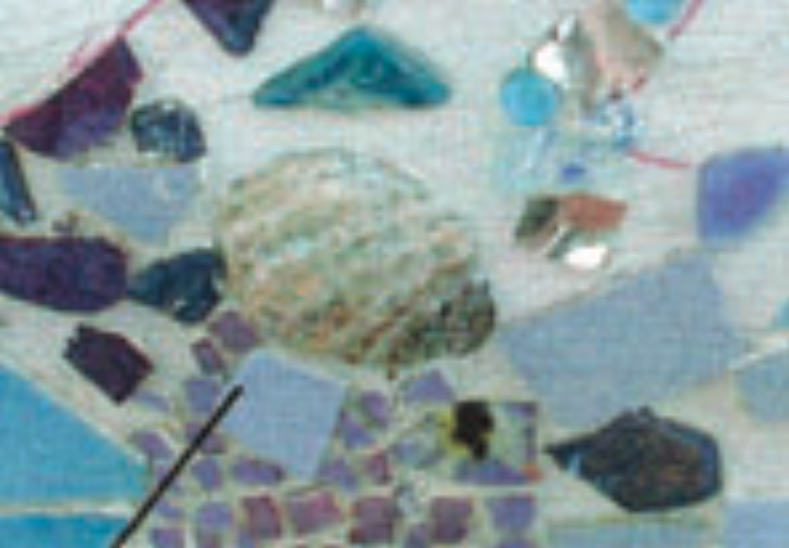
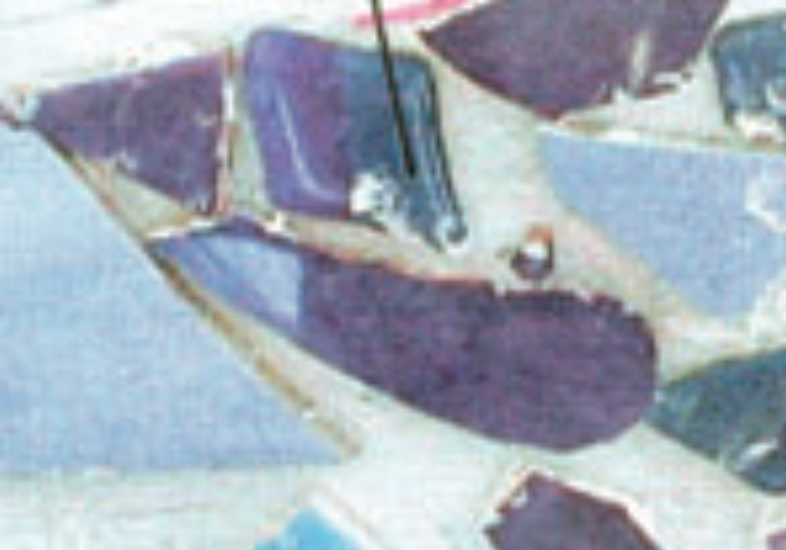
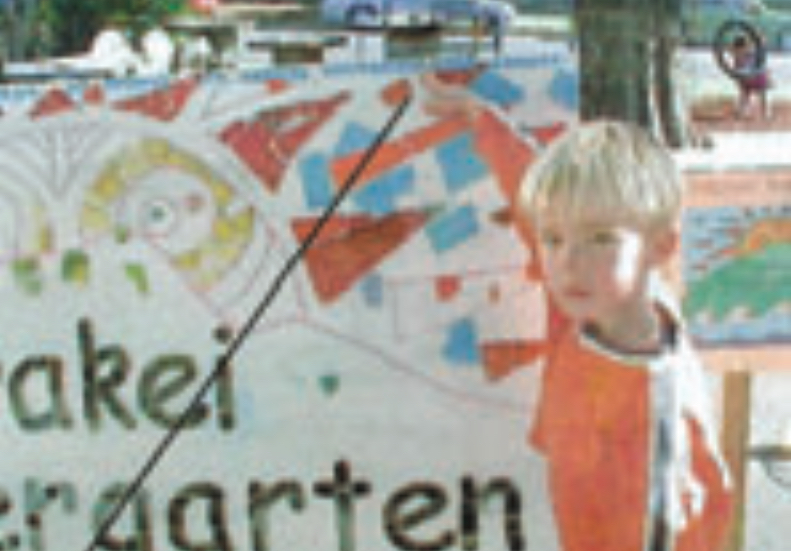
Meg and William’s paua shell. Meg found a triangle piece of tile that she thought looked like a whale’s tail. I cut out a whale’s body to go with it. And we glued it on in the “deep blue sea”. Jimmy shows where he decided to put the “blue bubbles”. 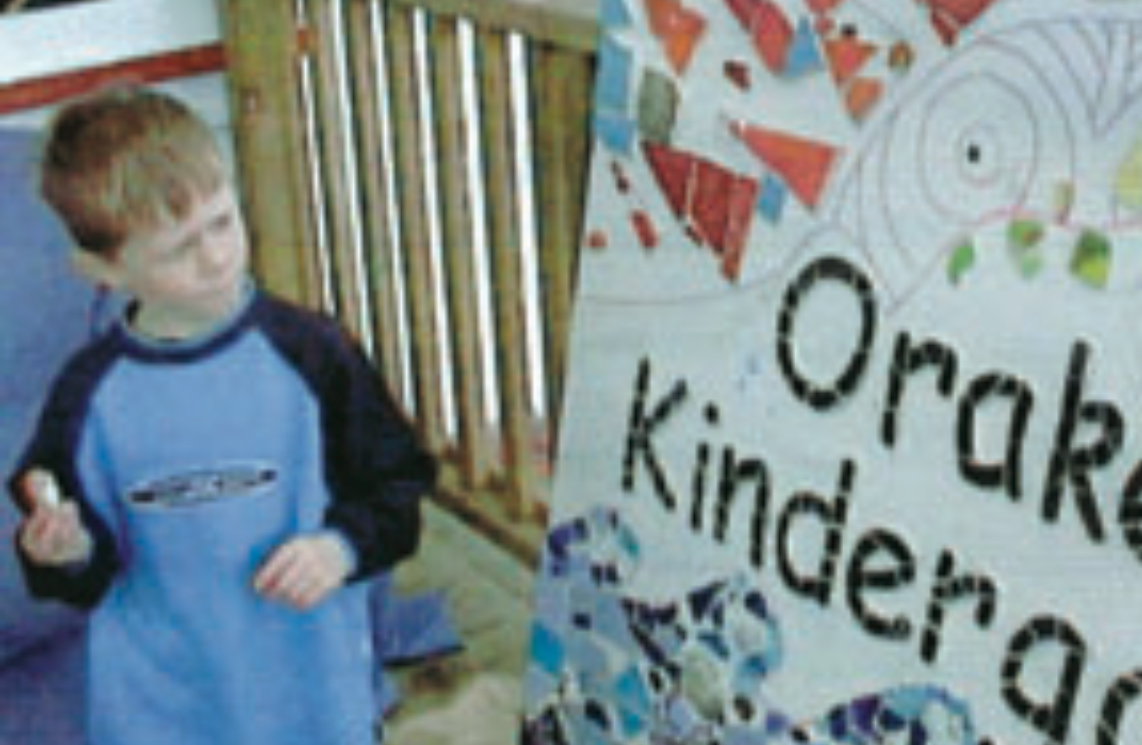
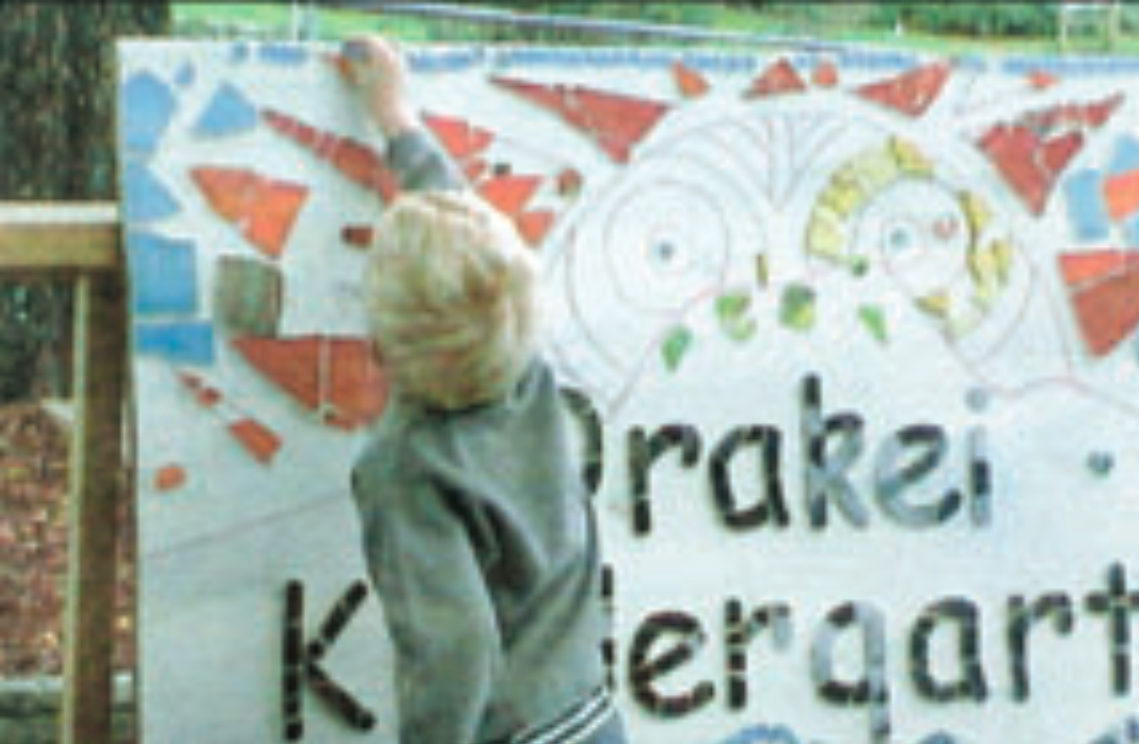
Hamish thinks carefully about where to put his piece Jimmy looked through a catalogue and saw some “glass bubbles” that he suggested we use for the mosaic. He showed us where he wanted them to go and George carried them on all the way across the sky. Summary of the children’s learning
The children are learning early maths concepts such as matching and comparing shapes. They are problem solving by moving tile pieces around until the best place is found, and they need to consider leaving a space around each piece for the grout. The children continually make observations about the size, shape and texture of their pieces. They frequently express their delight when observing a pattern they have purposefully, or sometimes accidentally, made. They are increasing their vocabulary by hearing and using words like, “shiny”, “rough”, and “reflective” to describe textures, or “straight”, “curved”, and “triangle” to describe shapes (Te Whāriki, Communication, Goal 2). There has also been much discussion about the different media we use and their properties (for example, how quickly the glue dries and how easily the different thicknesses of tile can break).
The children are learning to follow a plan that is stapled next to the sign. Some children independently refer to the plan to see where a certain coloured tile piece might go (Te Whāriki, Exploration, Goal 3).
Along our journey there has been a lot of discussion about the purpose of the sign, for example, for people to look at when they drive past. And there has been a growing awareness of where Rangitoto is in relation to the kindergarten, and what grows on the mountain (Te Whāriki, Exploration, Goal 4). The project has given the children many opportunities to contribute to the making of the sign (Te Whāriki, Contribution, Goal 1). We now have a core group who are keen to work on the sign every time the tools come out. They have also been learning about keeping themselves safe by using the tools appropriately. Some children are confidently showing the less experienced children what to do. For example, newcomers are quickly told to put an apron on before they pick up a gluing knife. The children have opportunities to work alongside their peers. Many have brought special things from home to add to the sign (Te Whāriki, Belonging, Goal 1).
What next?
We will invite a visitor from the marae to talk to us about the local significance of Rangitoto in our community.
We will invite the children to explore how the sign should be erected and where it should go.
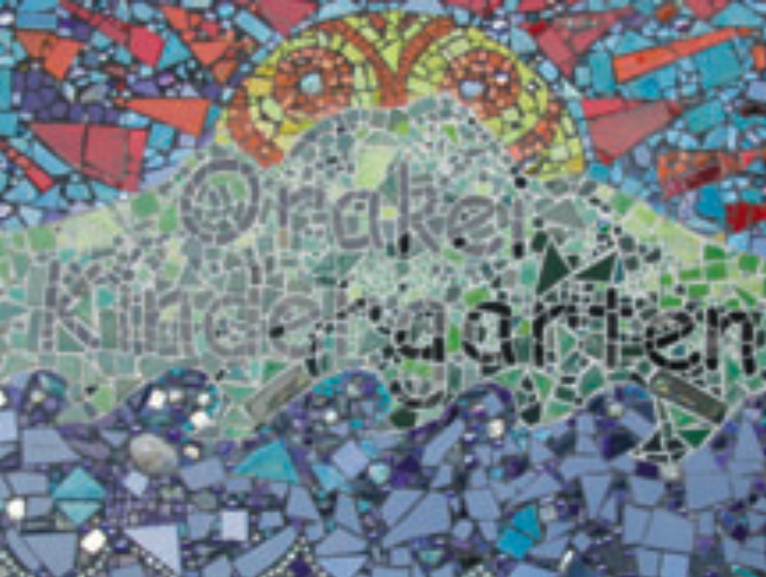
-
-
The dancing cats
-
It all began when some children began to take on the role of cats in the family play area. We decided to hire the video of the musical Cats 19 and see if there was any interest in this, especially after the children’s interest in ballet earlier in the term.
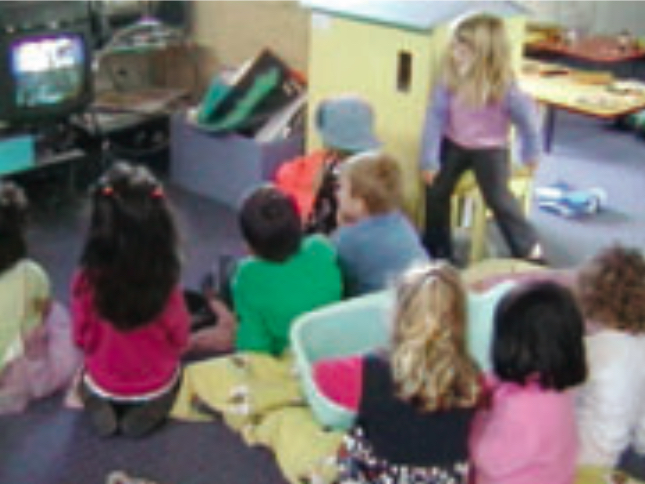
Watching the video on the Friday.
We hadn’t really expected that many of the children would watch the video, or that they would watch it for any length of time, so we were amazed when we put it on and not only did a large group appear in front of the screen, but they stayed there for the next half an hour. Some of the children danced to the music. At mat-time we asked the children about what they had observed on the video and most of the children took a turn at getting up in front of the group to demonstrate a movement or dance step that they had seen.

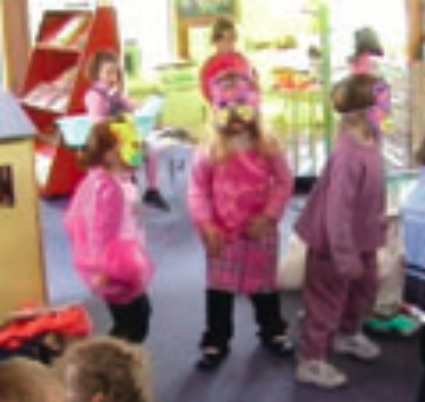
Samantha demonstrating how cats dance on their toes.
Sydnie, Holly and Katie dancing to the music while the video is playing. That was on the Friday and on the Monday the first thing they asked for after mat-time was the “cat” video. Over the next week they continued to ask for the video each day, and as well as watching it intently they began to imitate the dance steps and movements of the dancers – often watching, trying, watching again, and trying again over a long period of time. We also purchased cat masks to add to the area. The children loved these and when demand outstripped supply they practised their skills at asking for a turn and waiting for a turn.
We videoed the children each day and put our clips on the computer. We ended up with lots of footage and even after severe editing, there was still lots of great dancing to see. The children loved watching themselves on the computer and, as well as watching it with their friends and discussing what they had been doing, they also shared it with their families at the beginning of the session. We played it one afternoon as the afternoon children also enjoyed watching the clips of the morning children dancing.
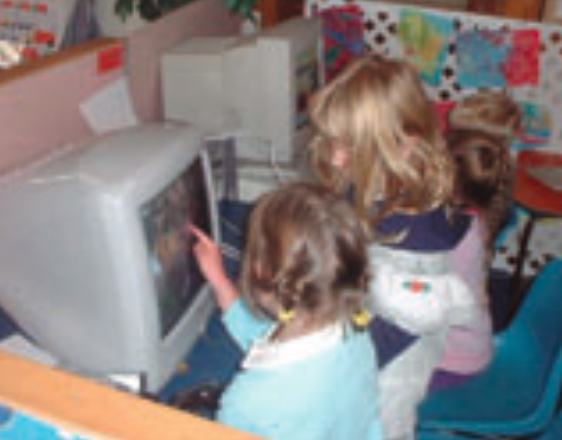
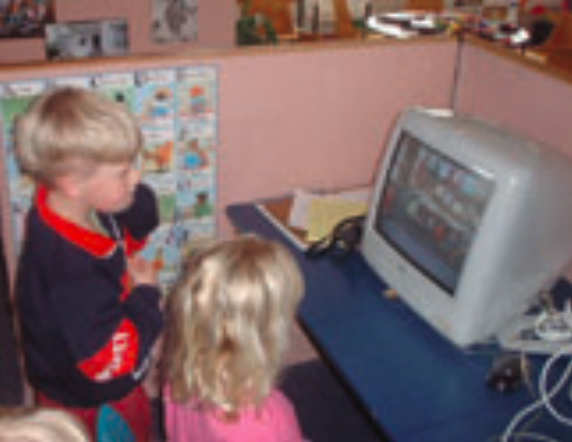
Holly and Bethaney examining the dancing William and Gabby in the afternoon watching the morning children dance As the days went by we were often calling out to each other to come and see what the children were doing now. Their dances and movements became more and more like those on the video. We began to notice they had definite favourite songs that they liked to dance to! “Jellicle Cats” and “Magical Mister Mistoffelees” were especially popular.
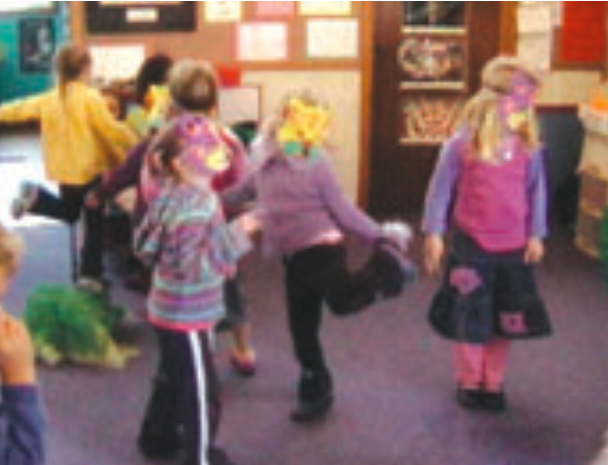
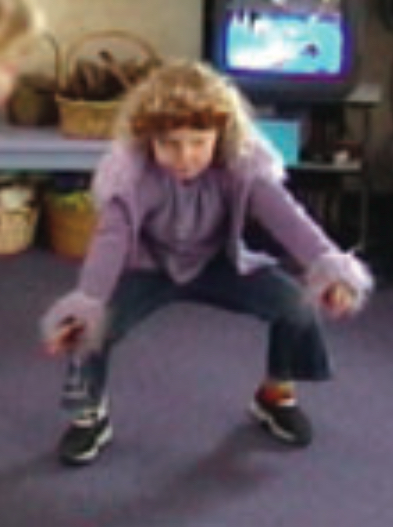
Bethaney, Holly and Abby developing the steps and movements. Abby imitating the Rum Tum Tigger. On the following Friday I got the face paints out and painted cat faces on the children’s faces. Most of the children had their face painted and a whole new range of cat movements developed with some new participants joining in.
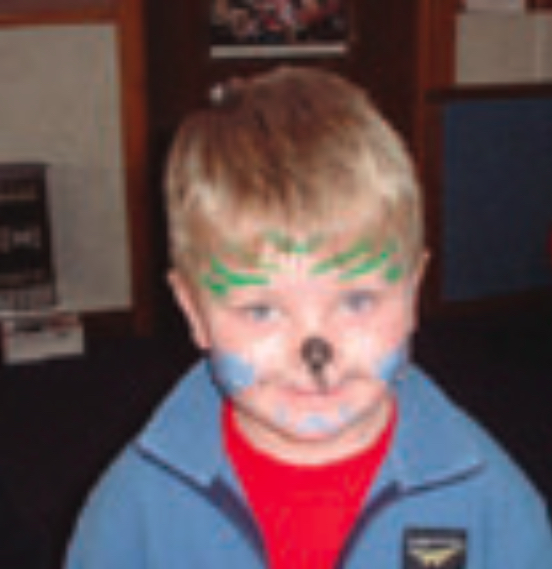

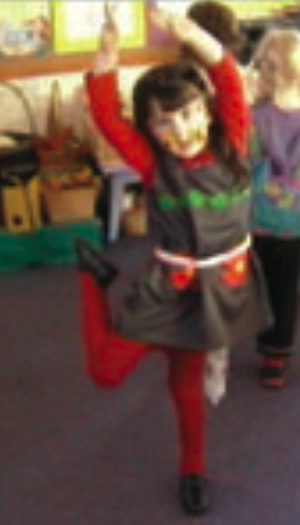
A new breed of cats emerge – Jack, Sydnie, and Cathy show off their new faces.
Meanwhile the children continued to take control of the direction their interest took. They included props in their dance sessions, showed each other different steps, pointed out interesting and favourite pieces on the video to each other, and requested activities related to their interest. Jayden came to kindergarten with a mask his dad had made him at home and this led to mask making at the art area. Kim suggested making tails.
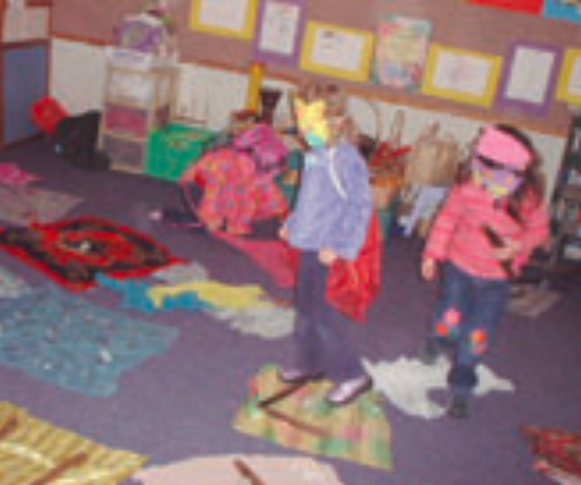
Abby and Cathy use scarves and sticks to define the patterns of their dance movements.
Other children also brought along props from home. Abby and Sydnie brought along cat ears and Jemima brought a cat headpiece and tail. We were also really pleased to borrow a souvenir programme of the show Cats, from Liam’s family. Earlier on we had downloaded pictures from the Internet for the children to base their drawings on.
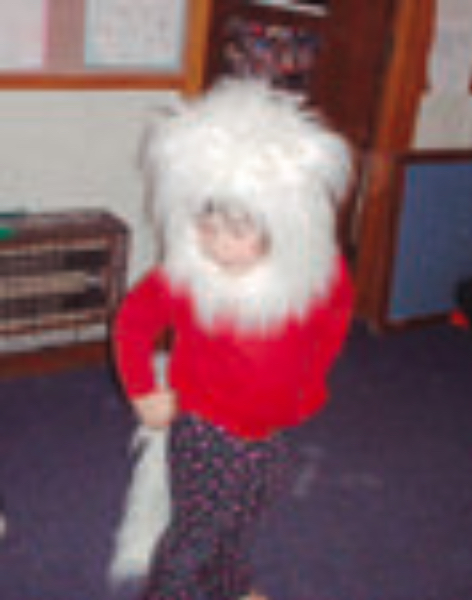
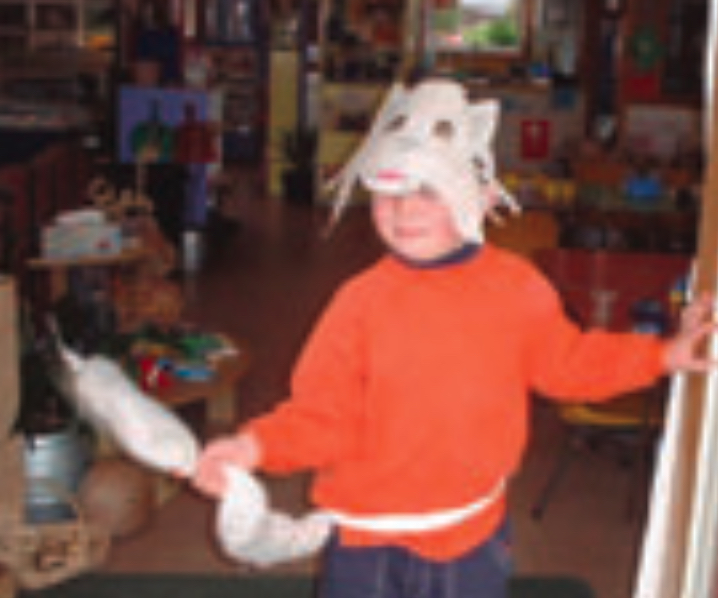
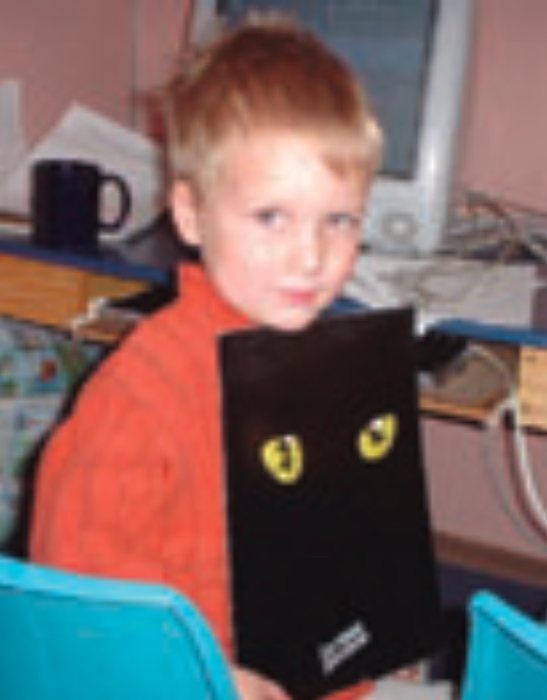
Jemima in her dress-ups. Jayden with his mask and tail. Liam with the souvenir programme. One of the best parts of this work has been the parents coming in and telling us about the conversations taking place at home – Jemima calling the cats at the door the “Jellicle cats”, Abby getting up in the mornings singing the songs from the video, and Jack watching the video at home and telling his mother the names of the cats and what was about to happen next in the story. I had assumed that the children were only watching the dancing and listening to the songs so I was amazed at how much of the storyline they had also picked up. The whole thing has taught me not to underestimate these incredible cat children.
Our investigation into the musical


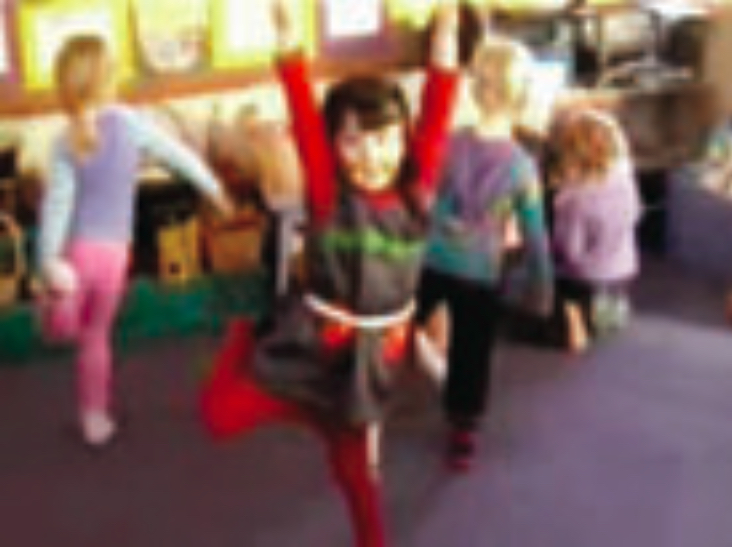
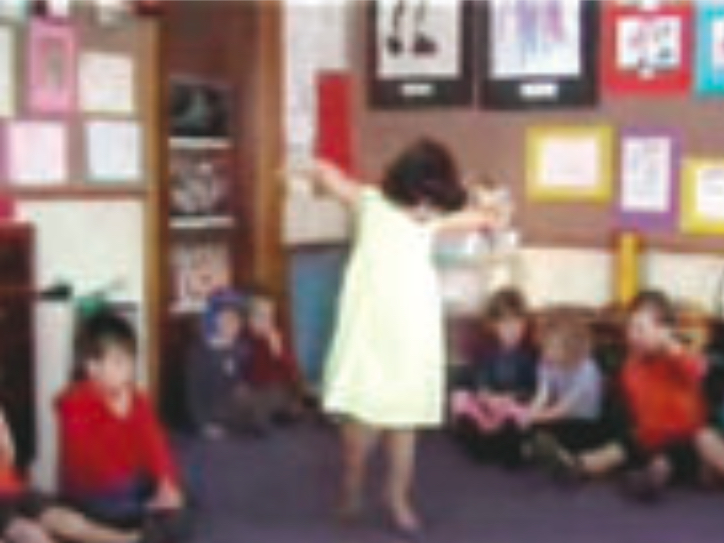
Watching the video. Developing our techniques. Improving our techniques through observation and practice Demonstrating our interpretation. 
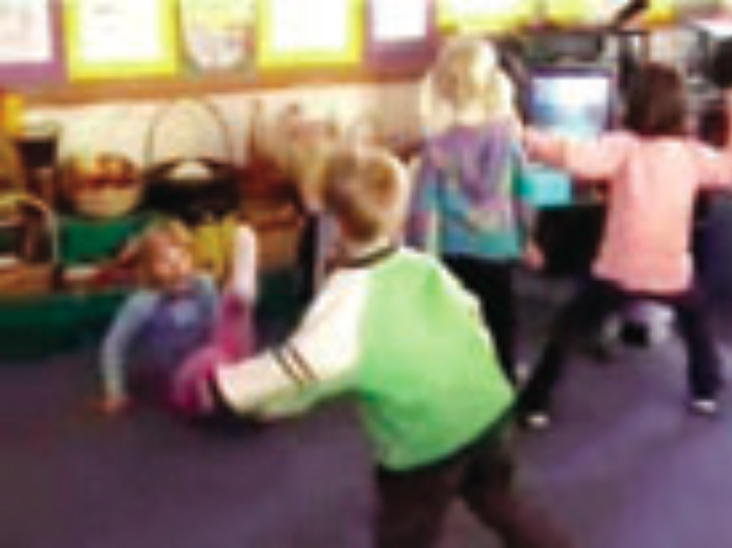
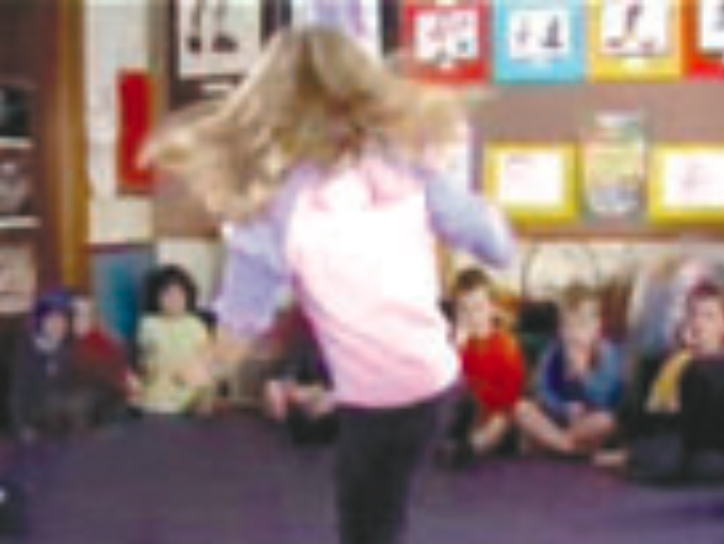
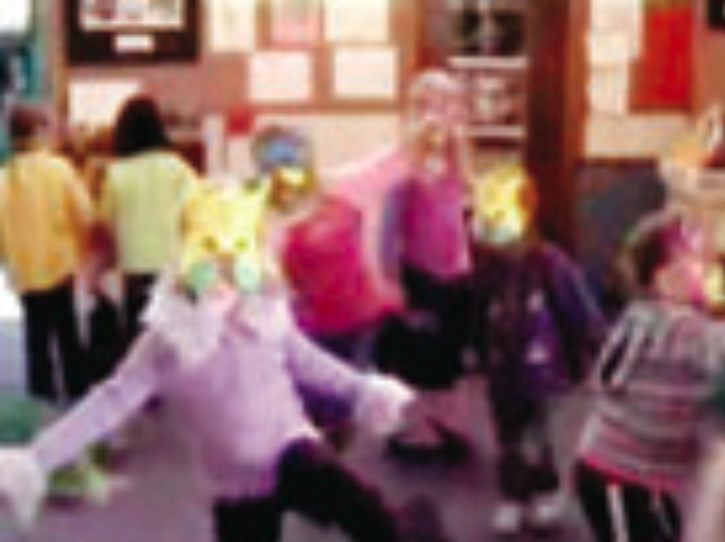
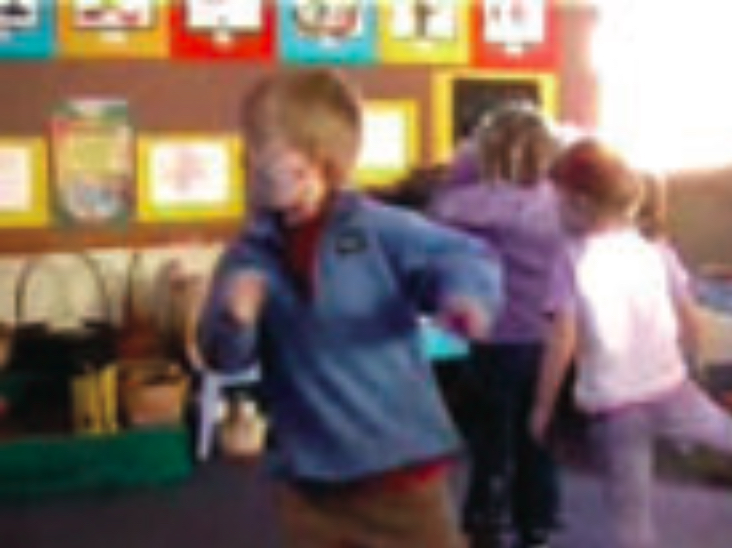
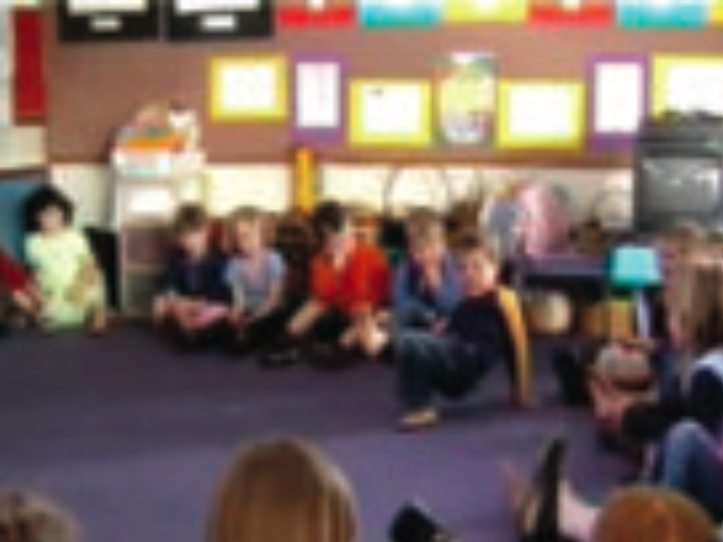
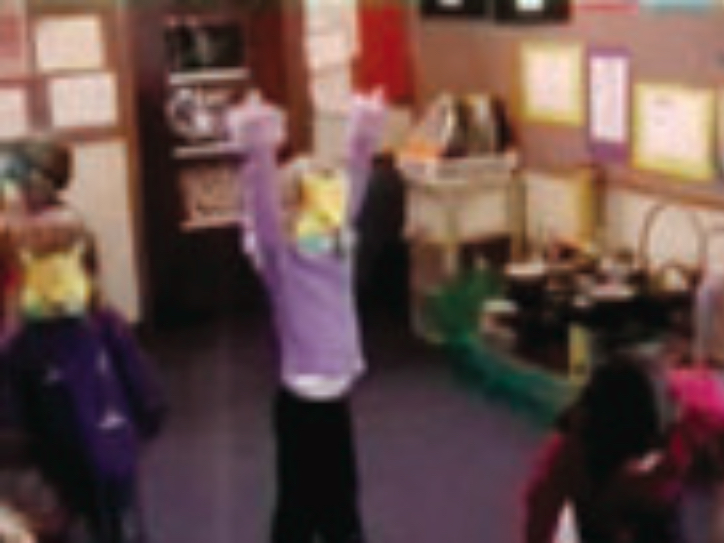

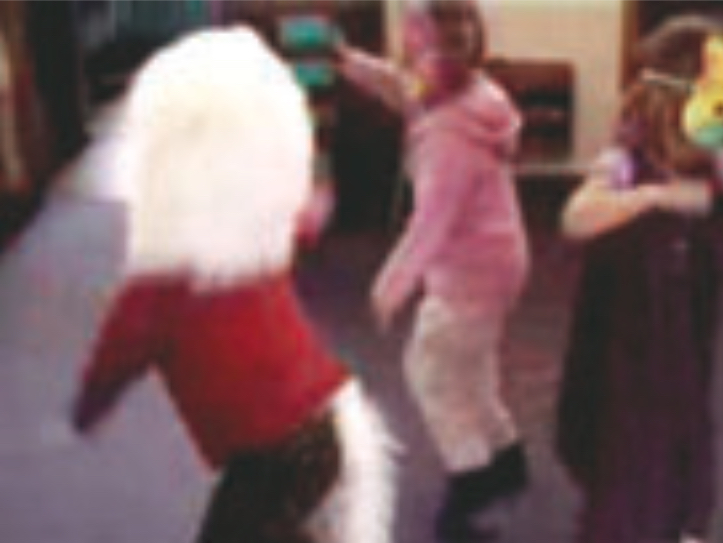
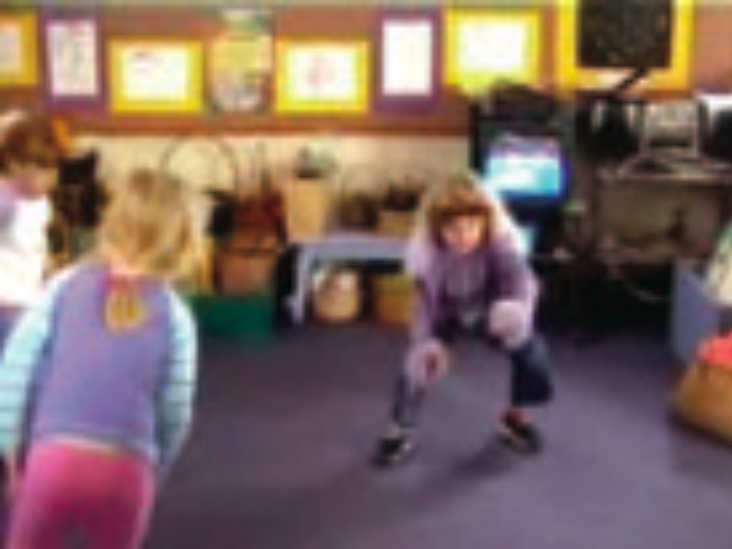
To be an explorer
This story shows the development of the ability to
- Make sense of the world – The children are developing their understanding of the ways drama can represent the people and things around us. They are using dance and movement to represent their ideas.
- Make links with previous experiences – The children have been using their previous knowledge of ballet – some of the children attend ballet lessons and earlier in the year they were involved in teaching their friends the steps.
- Learn useful and appropriate ways to find out what they want to know – The children have used observation skills to watch the dance steps and movements on the video and to re-create them. They have been involved in using the Internet and the souvenir programme for reference purposes.
- Actively learn with others as well as individually – The children have worked individually, in pairs and in groups to dance, to make resources and to watch the show.
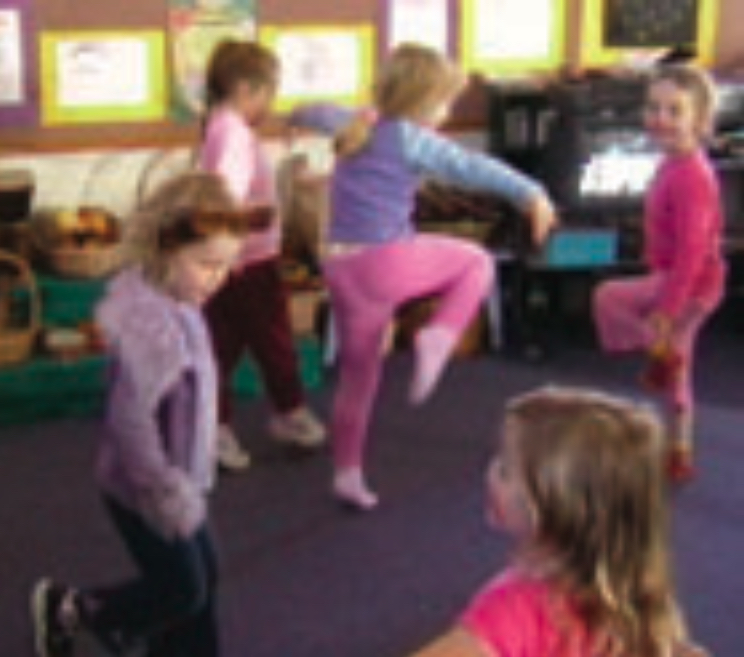

Watching and re-creating the steps. Working with others.
-
-
Looking closely
-
A learning story
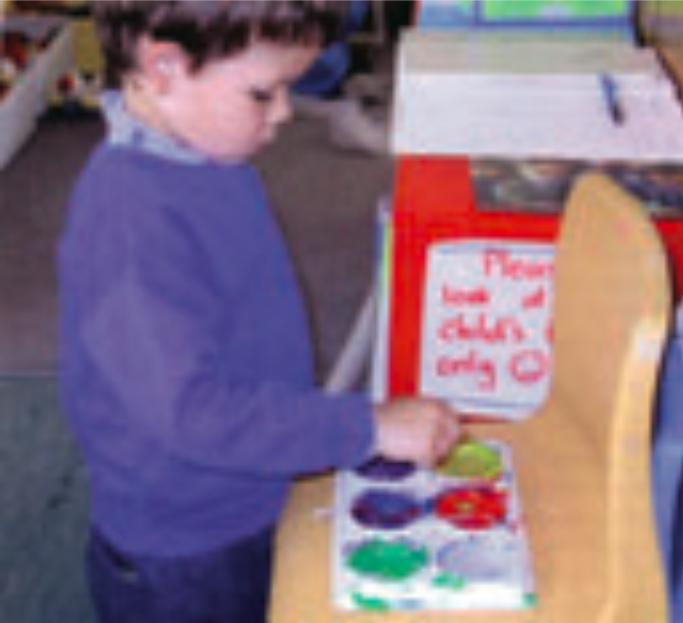


We have been encouraging the children to look closely at flowers and other objects before painting and drawing them. Today Ethan tackled the flowers, looking carefully at how spiky they were. When I thought he had finished he took his painting inside and put it on the easel.
“I haven’t finished yet,” he said. He chose some more paint and began mixing colours, which he added to his painting. He then went to the collage area and chose pieces of coloured paper to stick on his picture. “I’m decorating it now,” he told Karin.
Short-term review
Ethan has shown interest and involvement in challenging art activities. He is continuing to experiment with mixing colours. He expresses his ideas in a range of ways, adding to his picture at each stage.
Three weeks later
A learning story
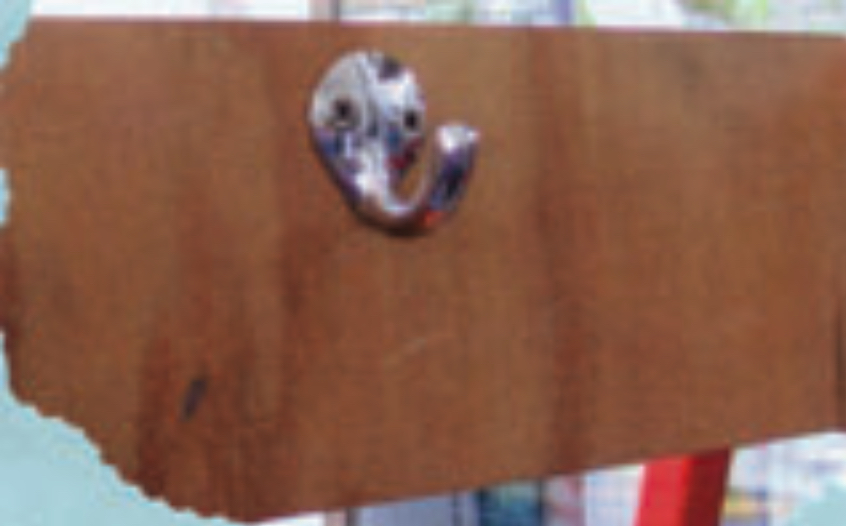
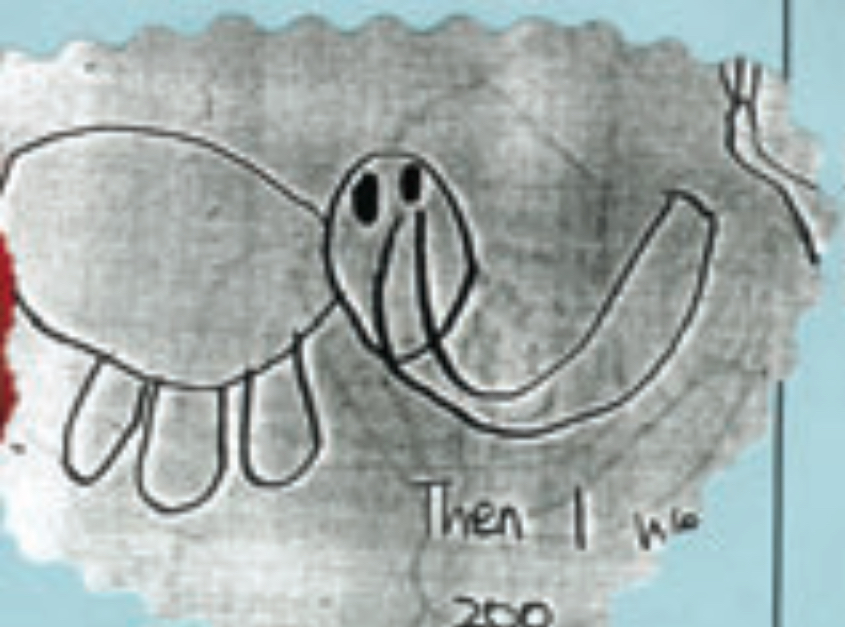
As Ethan hangs up his bag, he looks at the hook and says, “They look like elephants with little trunks.”
I ask him if he would like to make a book about the elephant hooks. I move the hooks closer while he is drawing the elephants.
Short-term review
Ethan has developed great understanding about the meaning of literacy and is using his knowledge in a fun and meaningful activity.
-
-
From costume designer to movie director
-
A cape for Conor
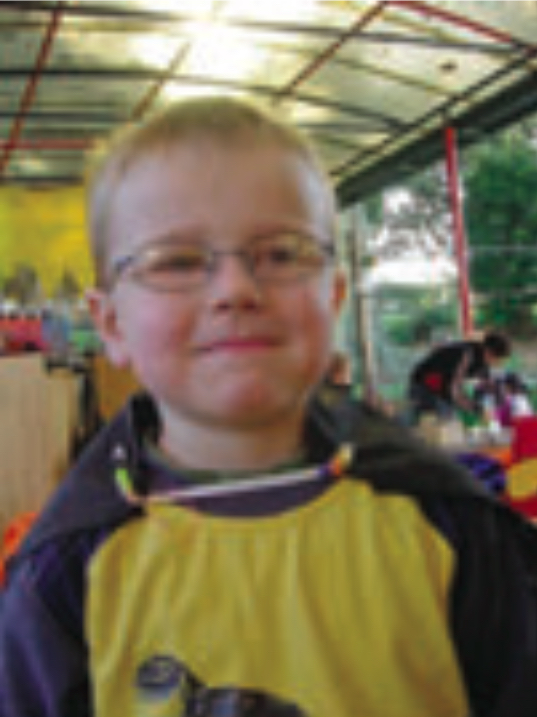
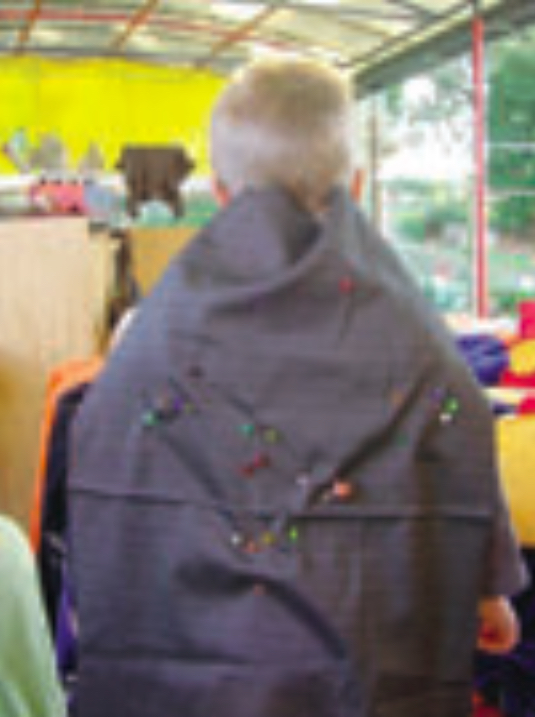
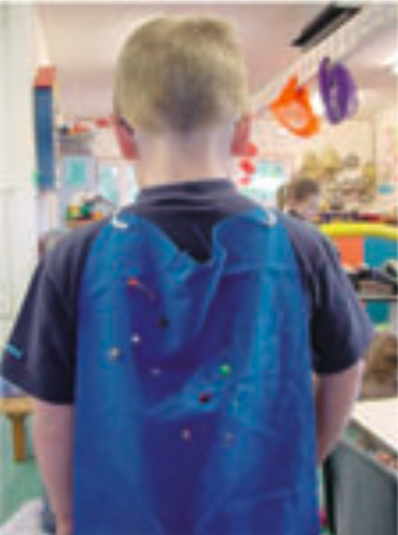
Conor looked over my shoulder. I was sitting holding the fabric while Harriette sewed her mermaid bra top. “You could sew something, Conor,” I said.
“I’m never going to sew,” Conor said.
“Ahh – well, you might not want to sew a mermaid bra, but you might want to make something else,” I said. “Like a cape perhaps ...?”
“Yes!!!” Conor said, suddenly very enthusiastic about that idea. Off he went to draw his plan and then we went on a hunt to find the right fabric. Unfortunately we didn’t have any big pieces of red material, which was Conor’s choice, but we found something else that was suitable. The bra makers had discarded beads. I asked Conor if he would like to use the beads on his cape “They’re beads of power,” I told him. Then he was very excited about them and proceeded to sew many beads on his cape!!!
What learning is going on here?
I was really impressed with Conor’s attention to detail. He was so careful about where he put the needle in the fabric. And I was also very impressed with Conor’s patience. He was very focused and determined and worked on his cape for two days.
Once the cape was completed, Conor wanted to make a mask. It also had to have a bead on the third eye area!!! Very powerful!! We didn’t have enough time to finish the mask at kindergarten so he has taken it home to finish there.
Well done, Conor. You are a fantastic power-cape creator, and it’s so great how you put so much care and attention into your work – fantastic learning dispositions!!!
Making a robber cape!
Conor made his second cape today! He had a clear idea about it – it was to be a robber’s cape. Just as before Conor put a lot of care and attention into his project. He went on to make a mask out of cardboard. “Now we can make a movie,” he said. I wrote down his movie script and the following day we did the shoot. What a fantastic improvisation – fantastic stage fighters too – slow motion and no contact – Excellent!!!
Julie
Conor’s movie ideas for Robbers and Superheroes
“Robbers are battling the superheroes – I’m a robber and Nicholas is a superhero. The robbers are baddies and the superheroes are goodies. The robbers are good at capturing and robbering – they capture the superheroes. The superheroes are good at catching them. If the superheroes do what they’re good at first, they win – but if the robbers do what they’re good at first, they win.”
The movie is titled Robbers and Superheroes
The images are a few stills from Conor’s five-minute movie. During his involvement in this project he participated in a range of different roles including:
- scriptwriter
- costume designer
- movie director
- actor.
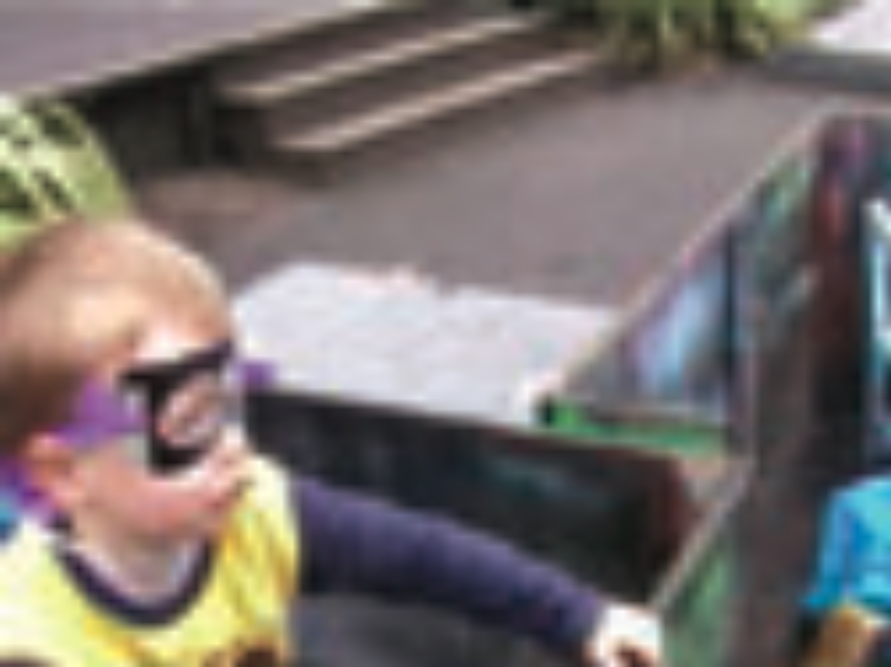

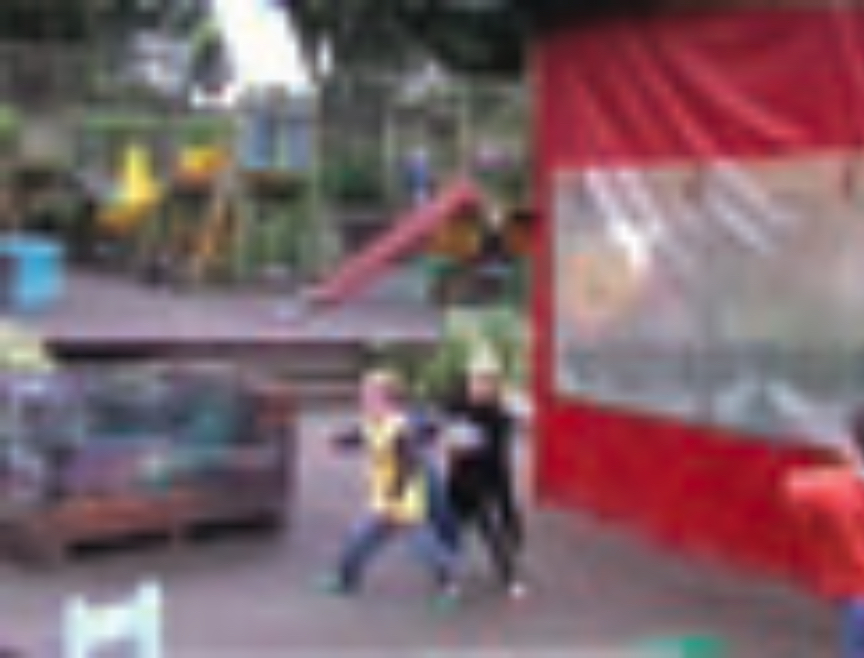
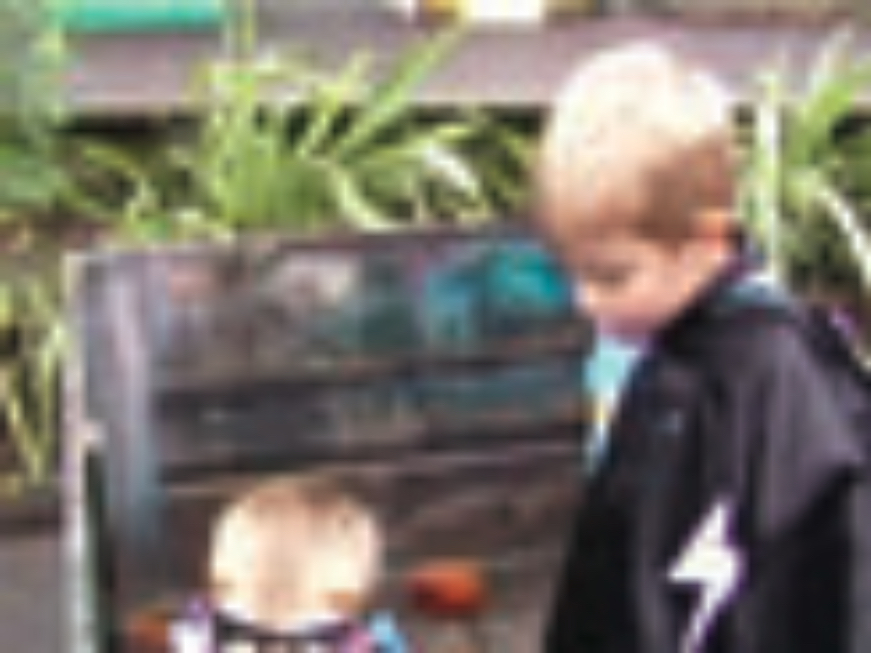

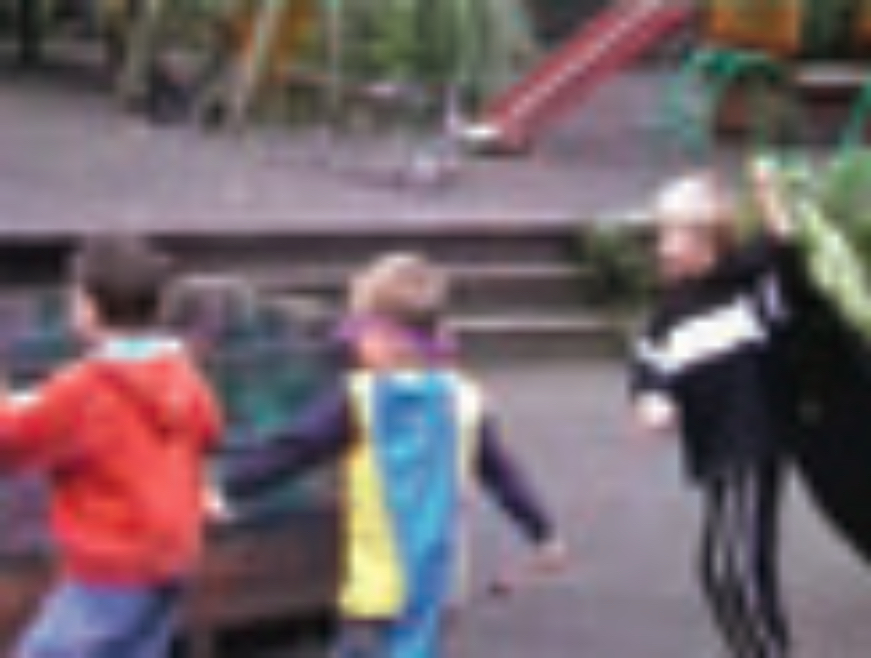
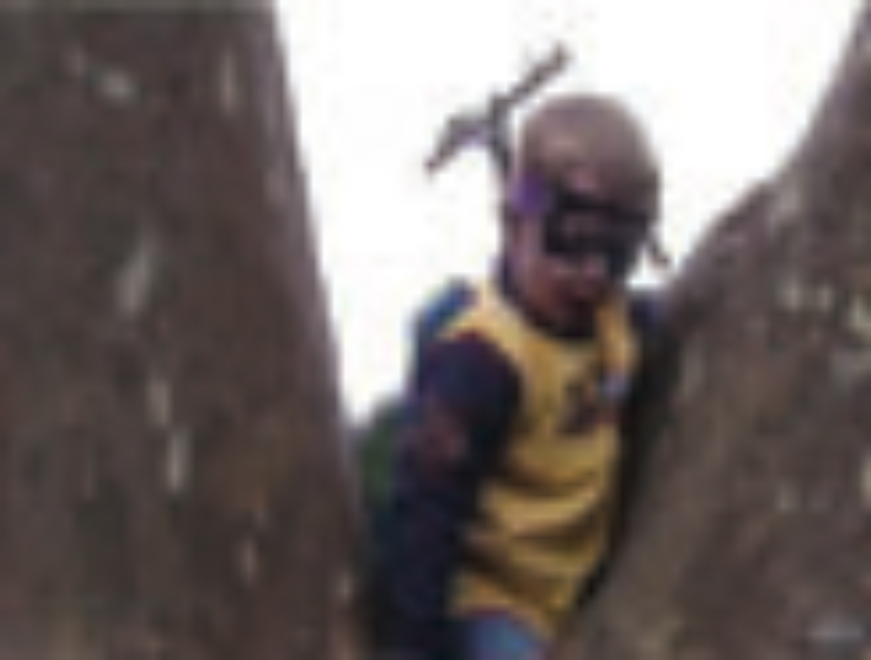
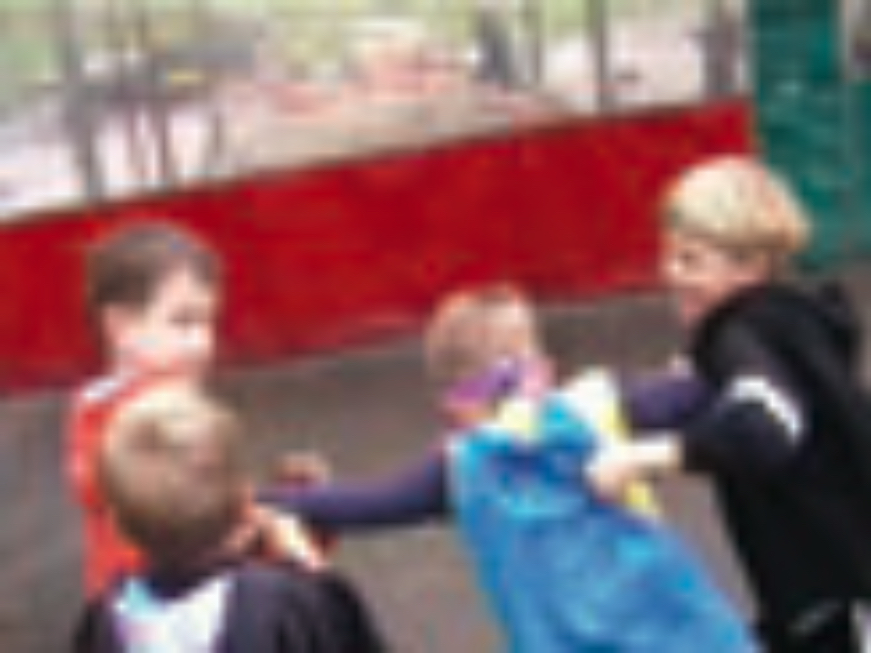
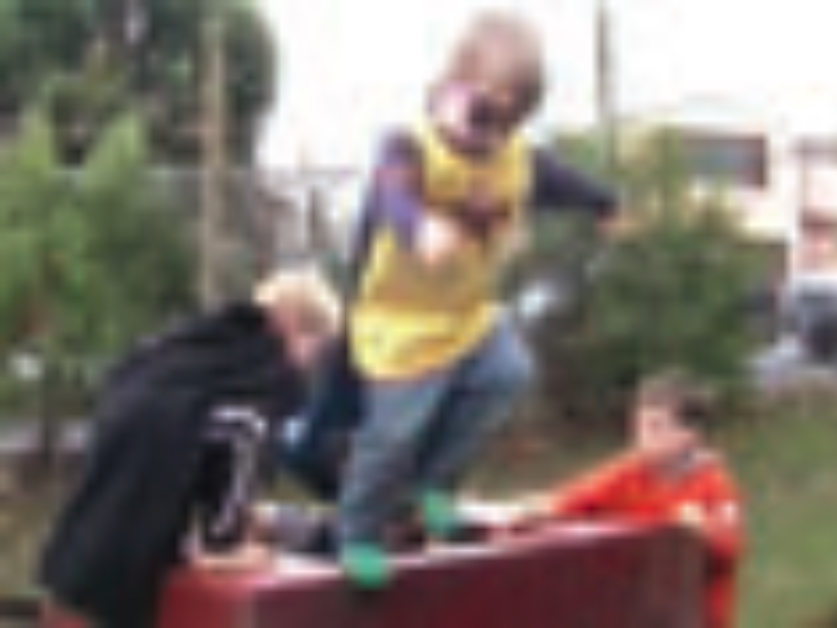
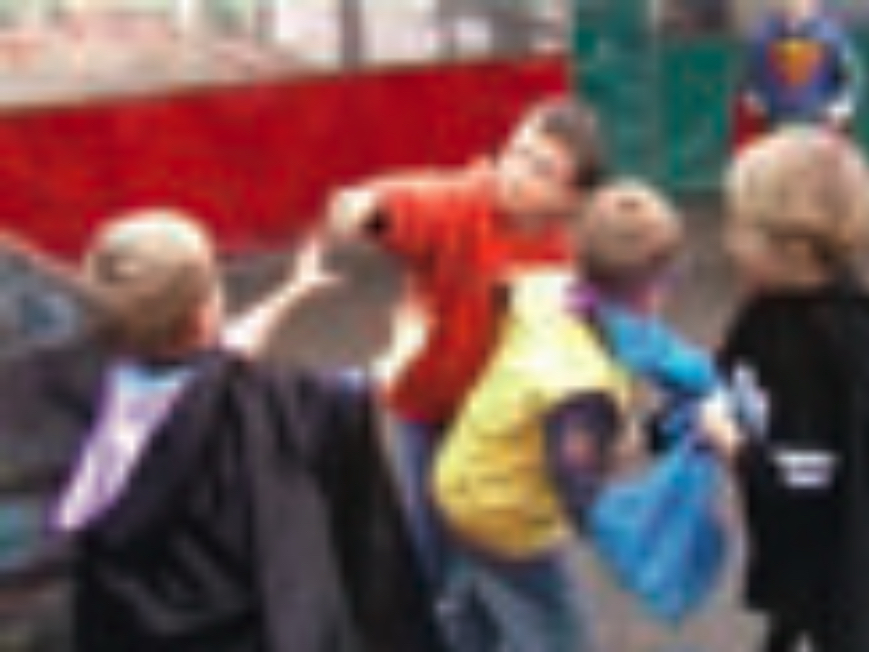
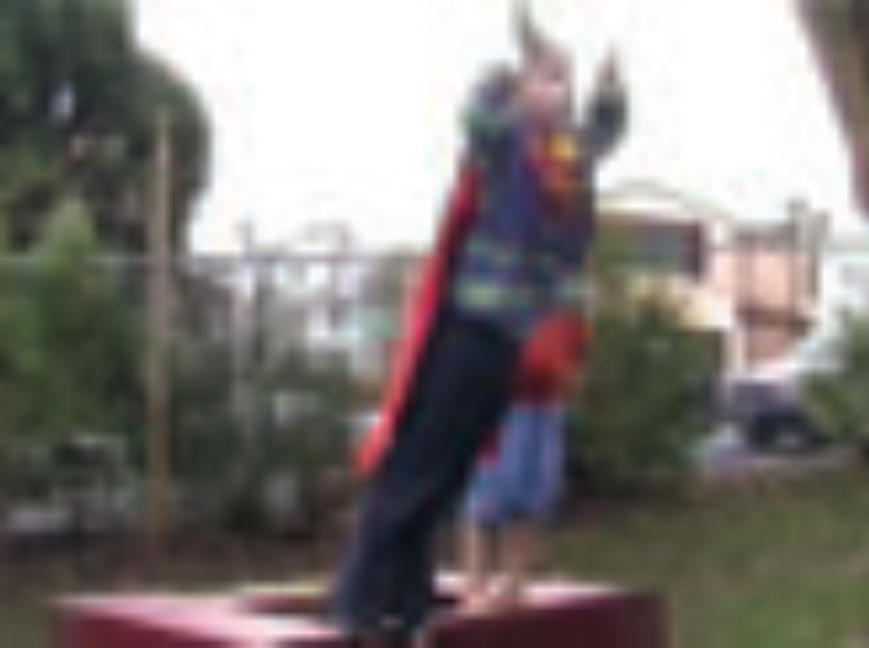

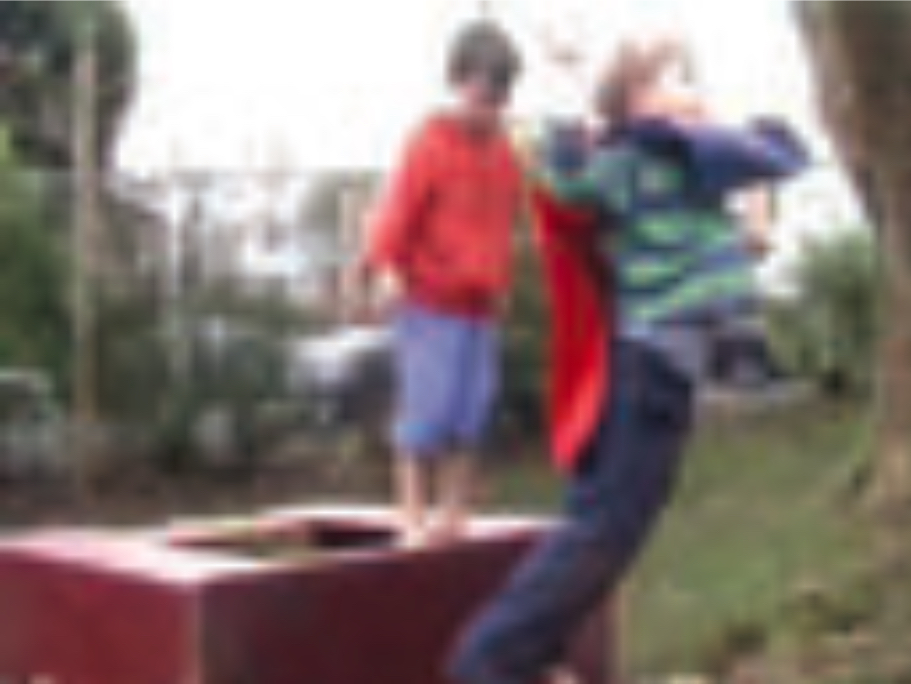
What did you like about the movie?

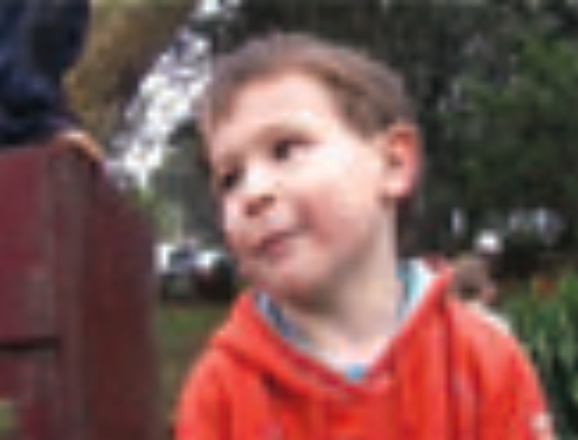
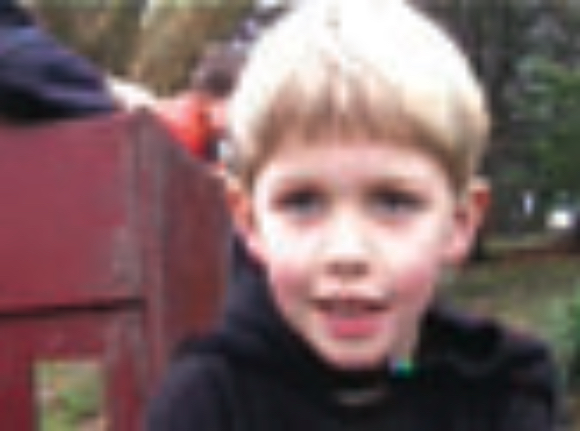
“I liked fighting,” said Conor. “The one where he stole the money and I found the key, the key to the treasure,” said Esmond. “I bumped into Tommy and he fell down,” said Nicholas. 
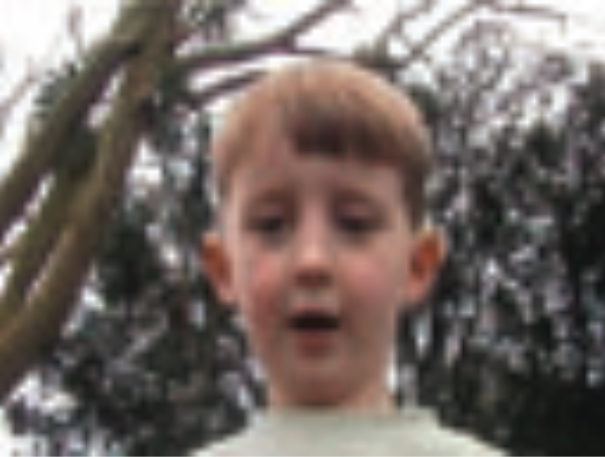
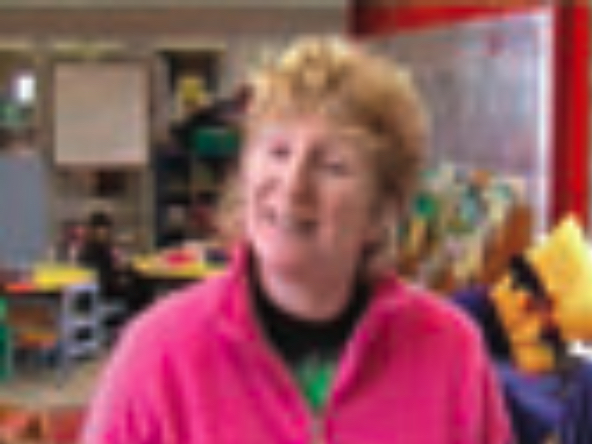
“I liked it where we became friends,” said Jamie. “I liked flying in the movie,” said Jack. “What I really liked about the movie was that the boys’ fighting was fantastic. They managed to fight without hurting each other,” said Julie. Parent voice
As with most boys at kindie, Conor has (or should I say had) very strong ideas about boy games and girl games. Sewing was definitely a girl thing. He had previously helped me to make two superhero capes at home but his involvement had been on the design side.
I was very surprised and proud to hear he was sewing his own cape at kindie. We have a very varied dress-up box at home and Conor loves dressing up. His first cape was a cape of power with special buttons. He proudly explained what each button can do. The second cape was a robber cape, again with special buttons.
Conor has “great” leadership abilities which were demonstrated in the director and male-lead roles he played in his movie, Robbers and Superheroes. We were amazed when Julie said he had written the script and organised the other actors.
Last night we had some friends over for a double movie premiere. A friend of ours has a short movie, Woollyman 2, in the Wellington Festival next week. The double bill featured Robbers and Superheroes and then Woollyman 2. Conor was very proud that his movie was being watched by both children and adults. He carried the tape around all night.
At the end of the double bill, we voted that Robbers and Superheroes had more audience appeal. Conor – costume designer, movie director, scriptwriter, and actor
... move over Peter Jackson!
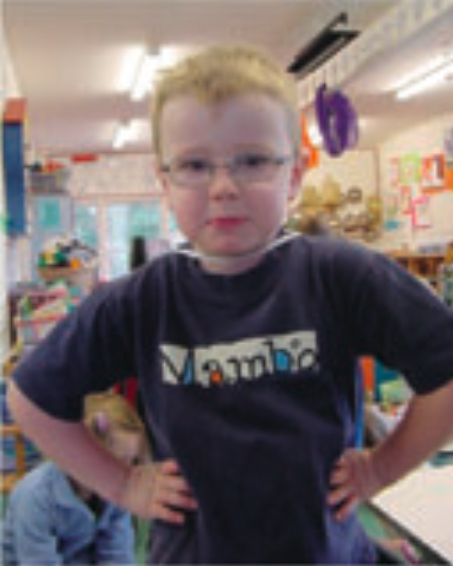
-
-
Painting tastes good!
-
Date: 20 September
Teacher: Karla
Well, Jack, you really seemed to enjoy yourself today. It was your first painting experience here at daycare, but I’m sure there will be many more to come!! You started off a little perplexed, wondering just what to do with this strange looking stuff, but it didn’t take long before you were in there boots ’n’ all!!
Jack, you showed us today that painting is really a three step process ...
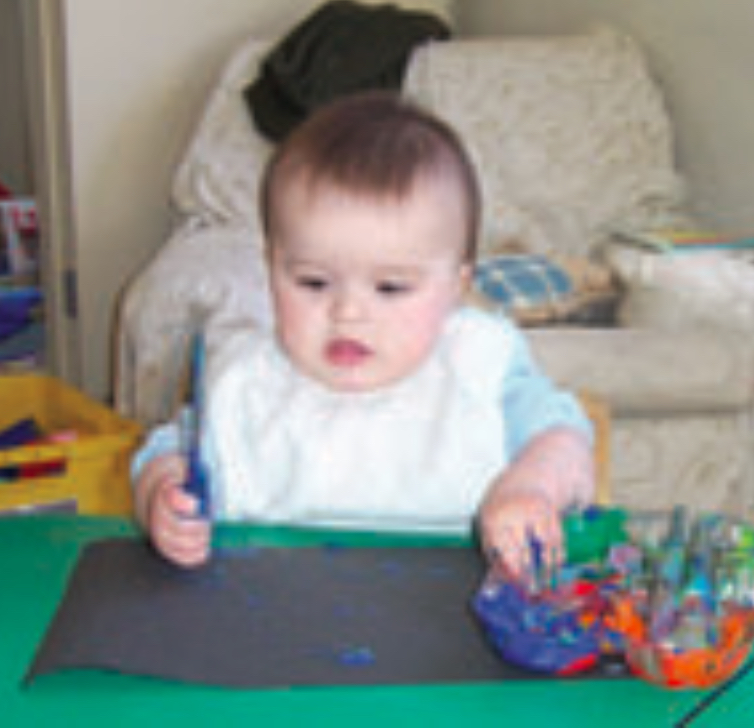

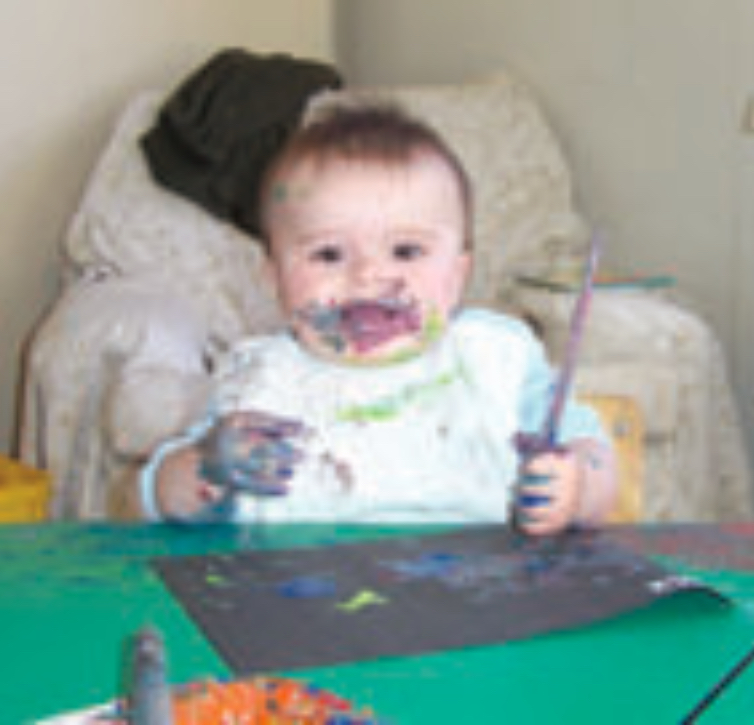
You start off looking nice and clean and tidy, with paper, a brush in one hand, and the paint in the other ... Then you move the paint to the other side and add a paintbrush to the other hand, too. A little tasting is required at this point to make sure that the paint is at the right consistency ... By the end of it all we have one very happy boy, some fantastic first paintings and a variety of paint on every available surface!! Wahoo!! What’s happening here?
Well, Jack had his first experience of painting here at daycare, and seemed to enjoy every minute of it (other than the clean up afterwards!!). He was exploring the paint in a variety of ways, by touching, squishing, and smearing. Of course we had to have the taste test too, maybe to see if the paint tasted as good as it looked? I’m not sure!! But this is all part of painting with this age group, and the main thing is that Jack seemed to enjoy his painting experience.
What next?
We will make painting activities available to Jack on a regular basis so that he is able to become more familiar with the concept and practice of getting the paint onto the paper. We will also offer him the opportunity over time to experiment with other brushes and other tools. Jack will also have the opportunity to experiment with other media, such as collage, pastels, crayons, markers, etc. These different media will offer something new and will continue to extend Jack’s experiences here at daycare.
-
-
Tegan plays for the birds
-
Child: Tegan
Teacher: Jane
A learning story
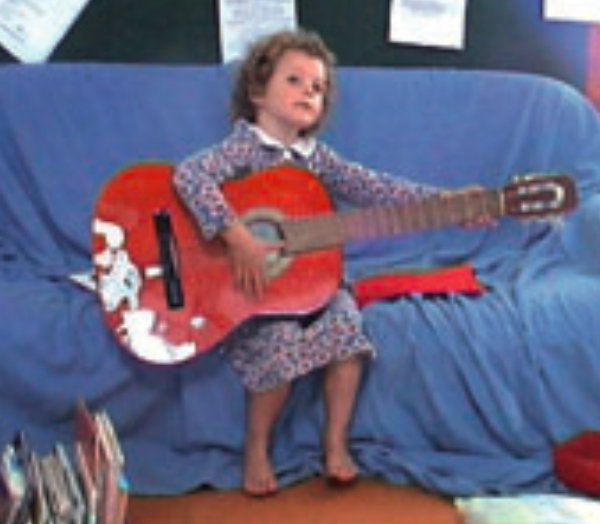
Tegan sat down on the couch in the book area, bringing the guitar with her. She began to play the guitar and said, “It’s working, it’s working.”
I asked Tegan, “What’s working?”
“My playing – it’s working.”
“How do you know that it’s working?” I asked.
“The birds are moving. I played the guitar so they could dance.”
Short-term review
Tegan displayed a genuine interest in the new birds. She demonstrated this by wanting to play the guitar for them so that they would dance. “They are moving.”
Tegan was also interested in using a musical instrument to accomplish what she wanted to do.
This can be linked to Te Whāriki, Communication, Goal 4: “Children develop skills with media that can be used for expressing a mood or a feeling or for representing information, such as crayons, pencils, paint, blocks, wood, musical instruments, and movement skills”.
What next?
Encourage Tegan to help care for the birds and to communicate with them.
-
